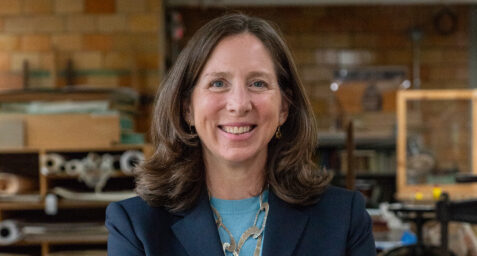The Journey of a Set Book
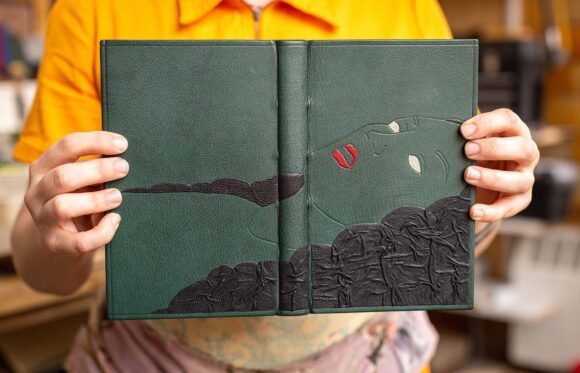
The set book is a one-of-a-kind project for Bookbinding students that runs the span of several months. It requires each student to bring together not only skills they have developed during their time at the School, but also invites outside inspiration and encourages exploration.
An industry term, ‘set book’ refers to a chosen text block that’s typically supplied to a bookbinder in order to create a custom decorative binding for an exhibition. For this project, students craft a full leather design binding. Over the course of their second year, they build confidence with leather by working with it in a myriad of ways.
Of Mice and Men by John Steinbeck, an internationally acclaimed title, was chosen for the set book this year. Many of the students found inspiration in the Salinas Valley landscape so beautifully described in the book. It’s embodied in their color palettes and by incorporating certain design elements. Concepts were also developed by students’ prior experiences, their desires to experiment with unusual materials, and their approach to the use of contemporary techniques in new ways.
Production begins as soon as a final design is approved by the department head, Jeff Altepeter BB ’99. A typical process is described below.
A set book typically comes unsewn in folded signatures or sections, known as a “book in sheets.” This particular edition Of Mice and Men had two unexpected challenges: being printed on heavyweight paper and loose illustrations. Students were given the option of sewing the signatures to stubs to create a more flexible binding. However, this technique is outside the normal curriculum, so it was up to the student to explore this option. In regards to the loose illustrations, some students incorporated them into the book, while others left them out or created a separate folder to be housed with the binding.
Production Steps

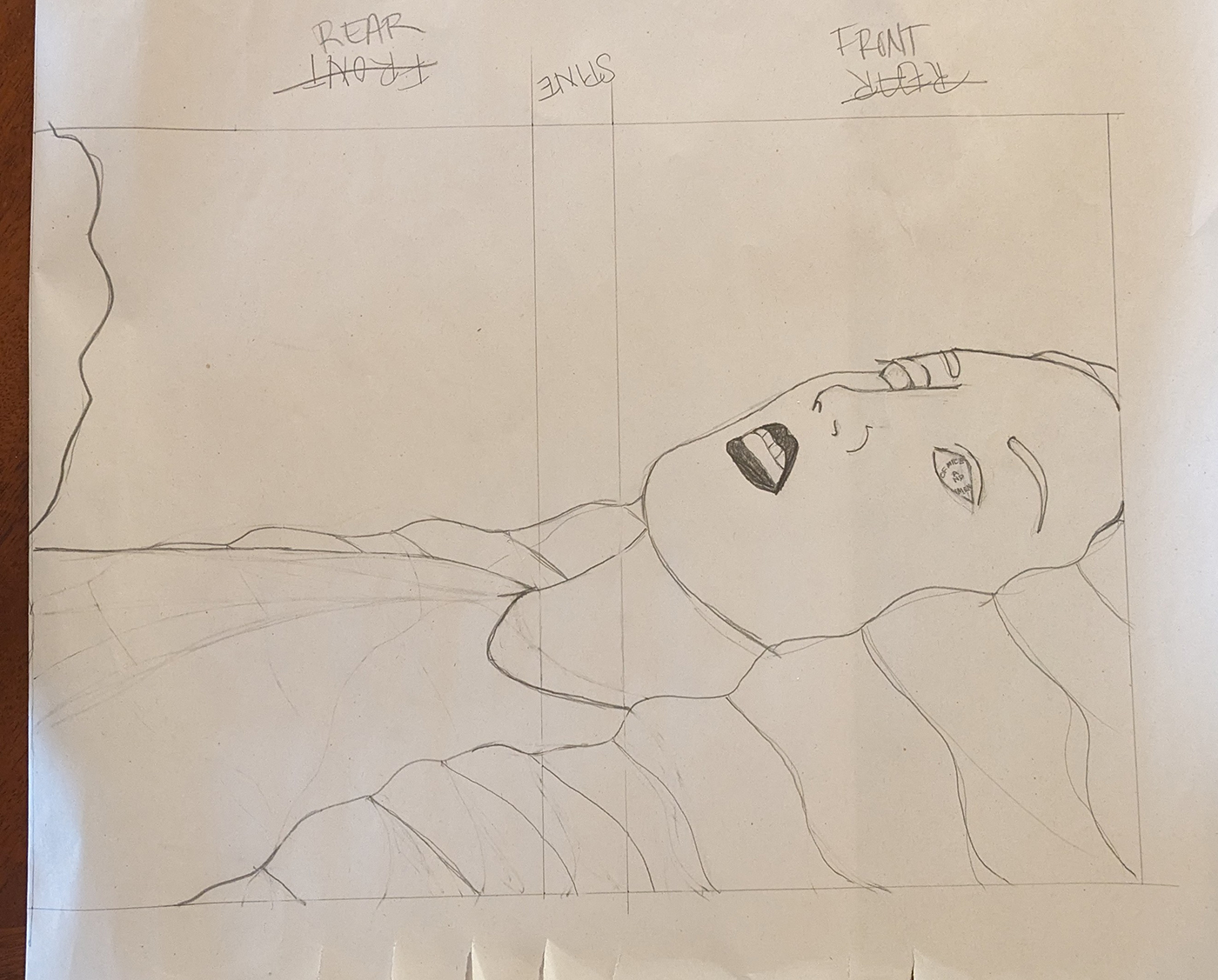
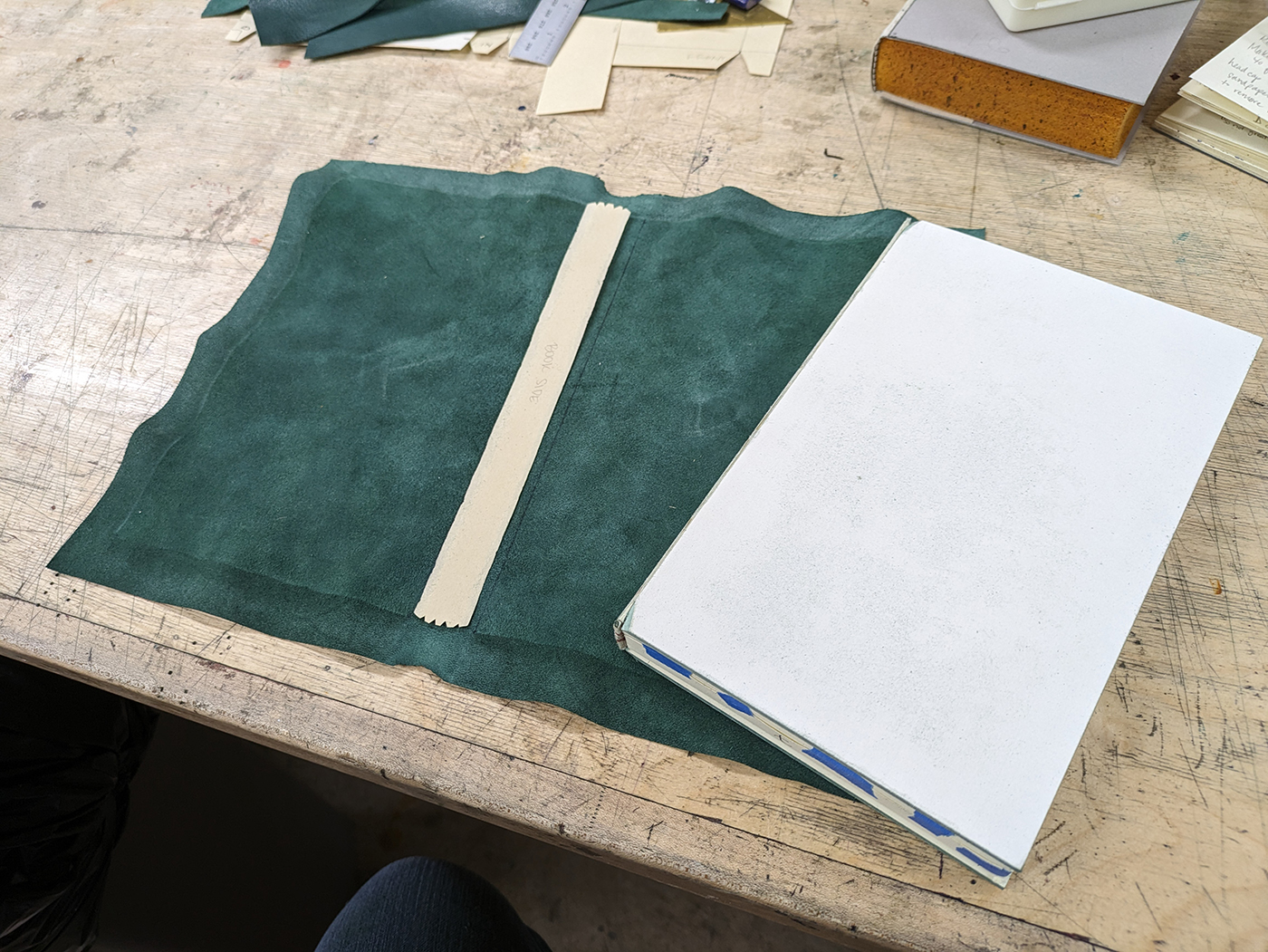
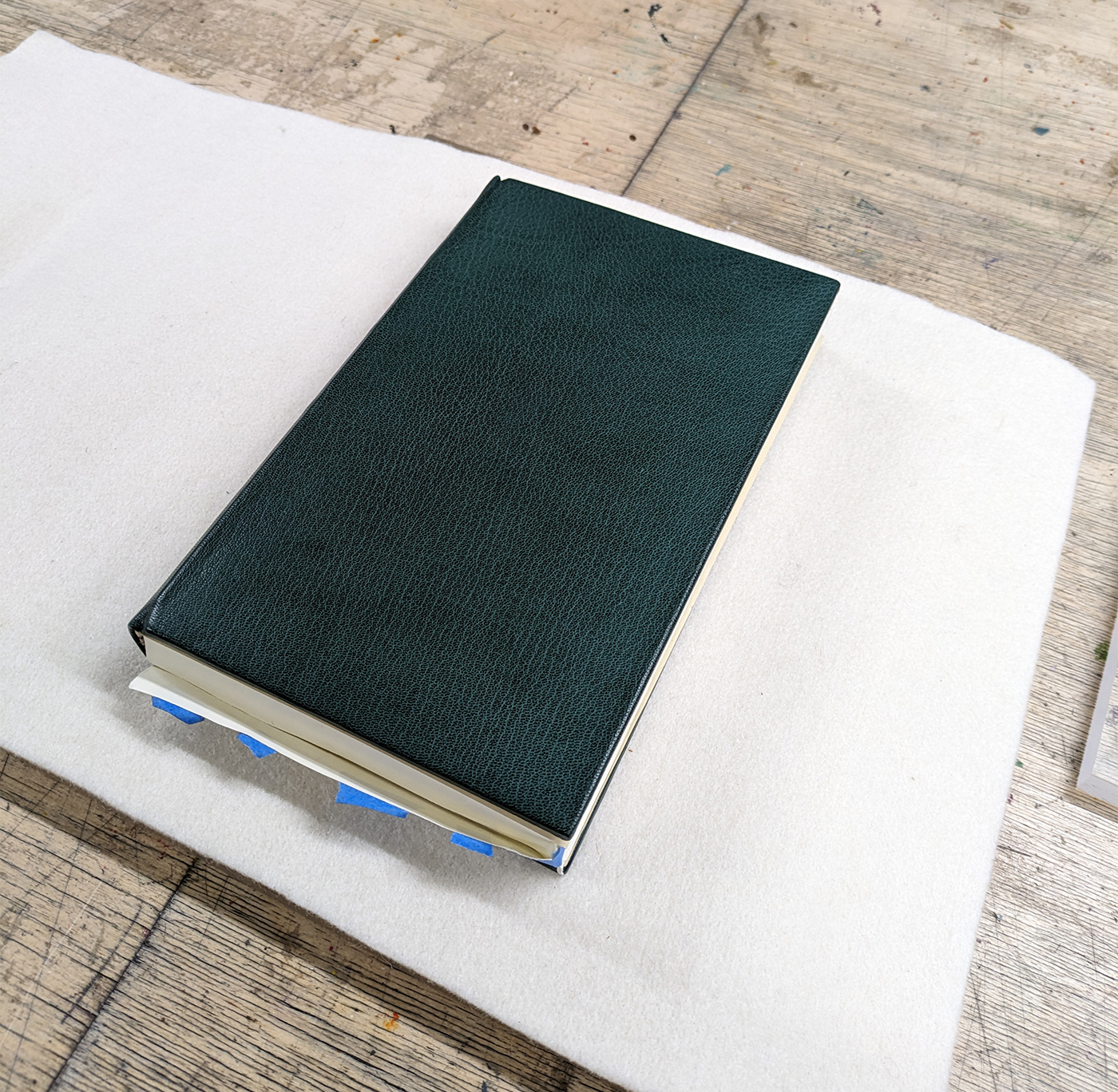

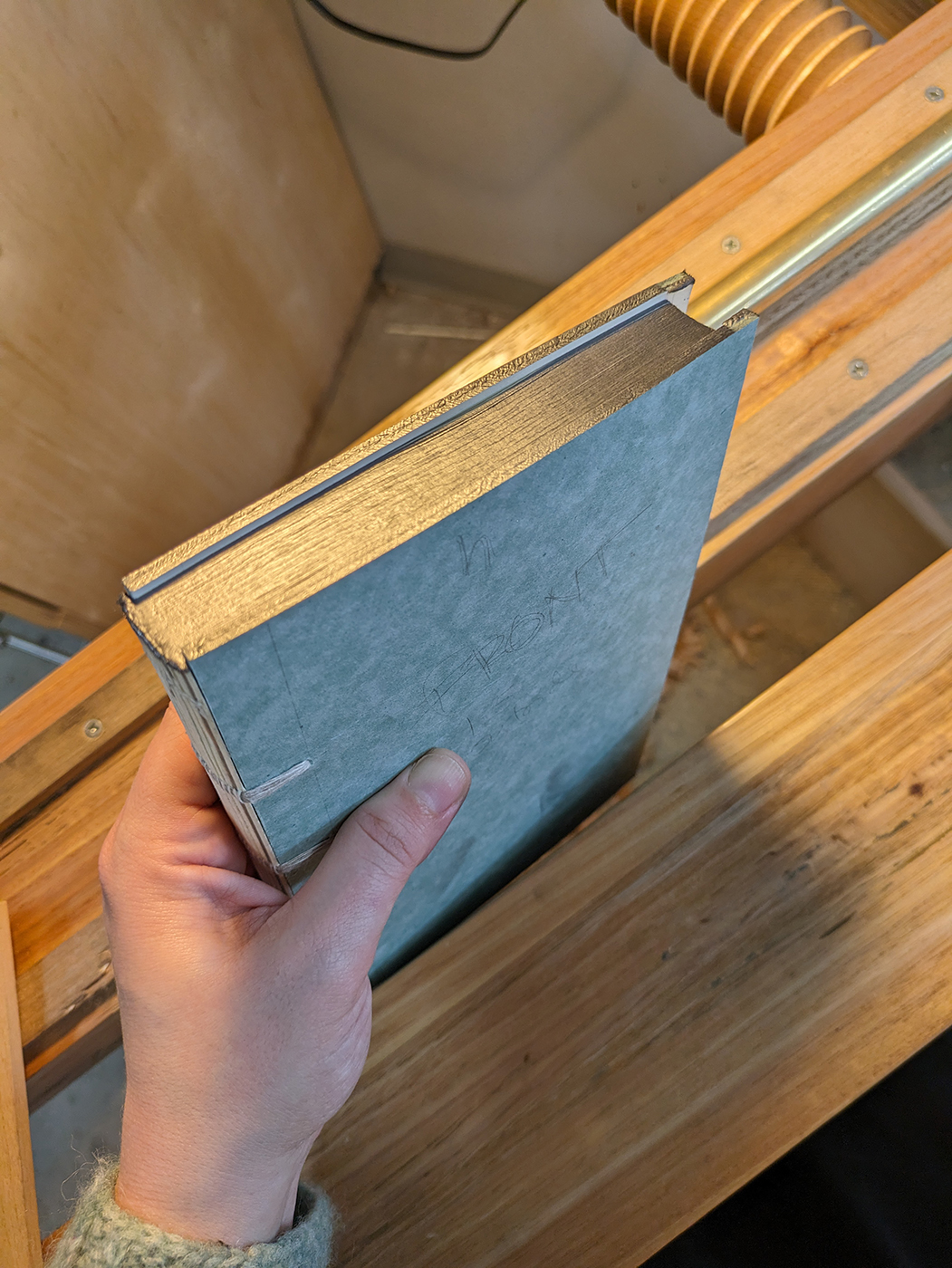


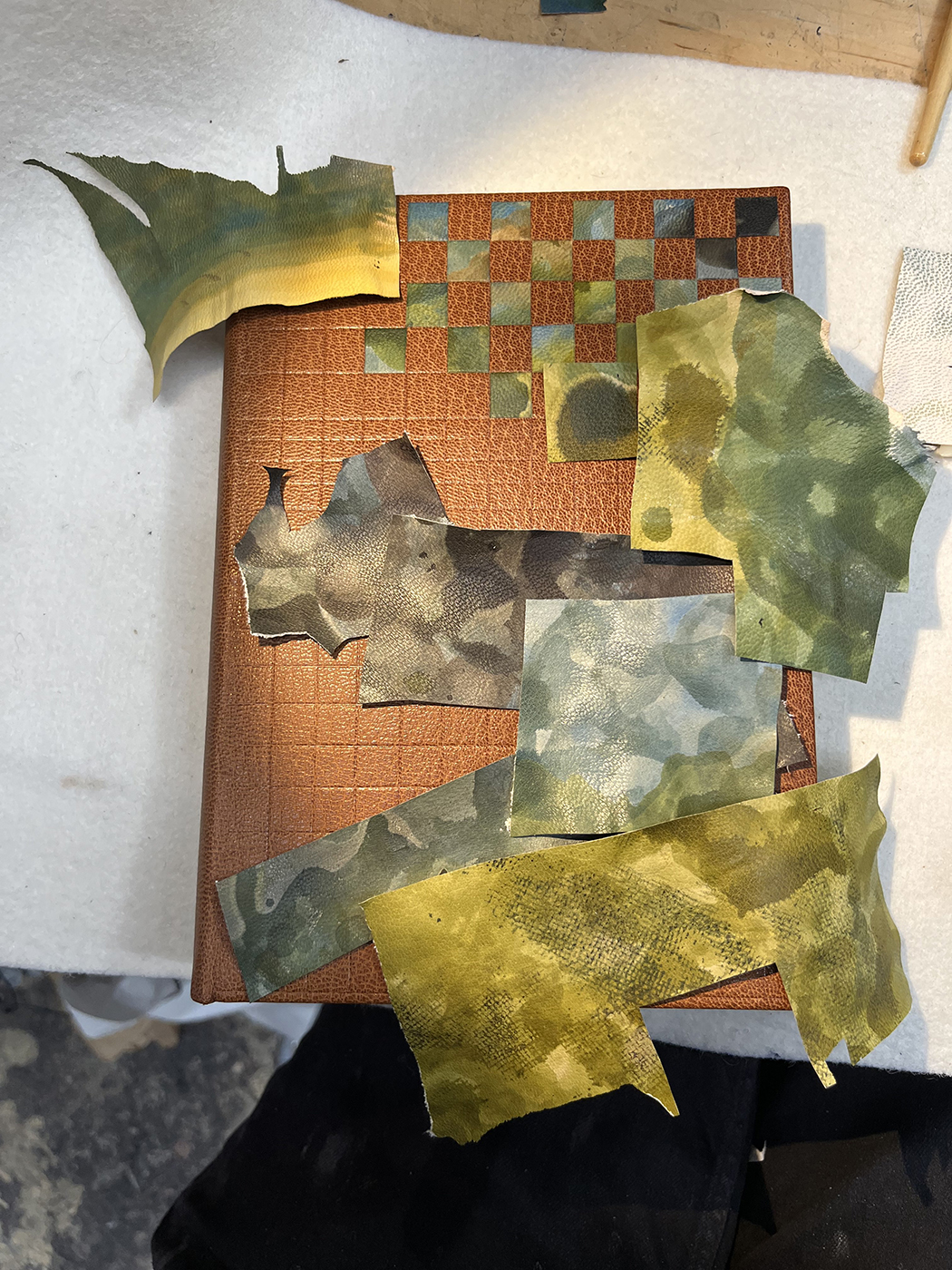

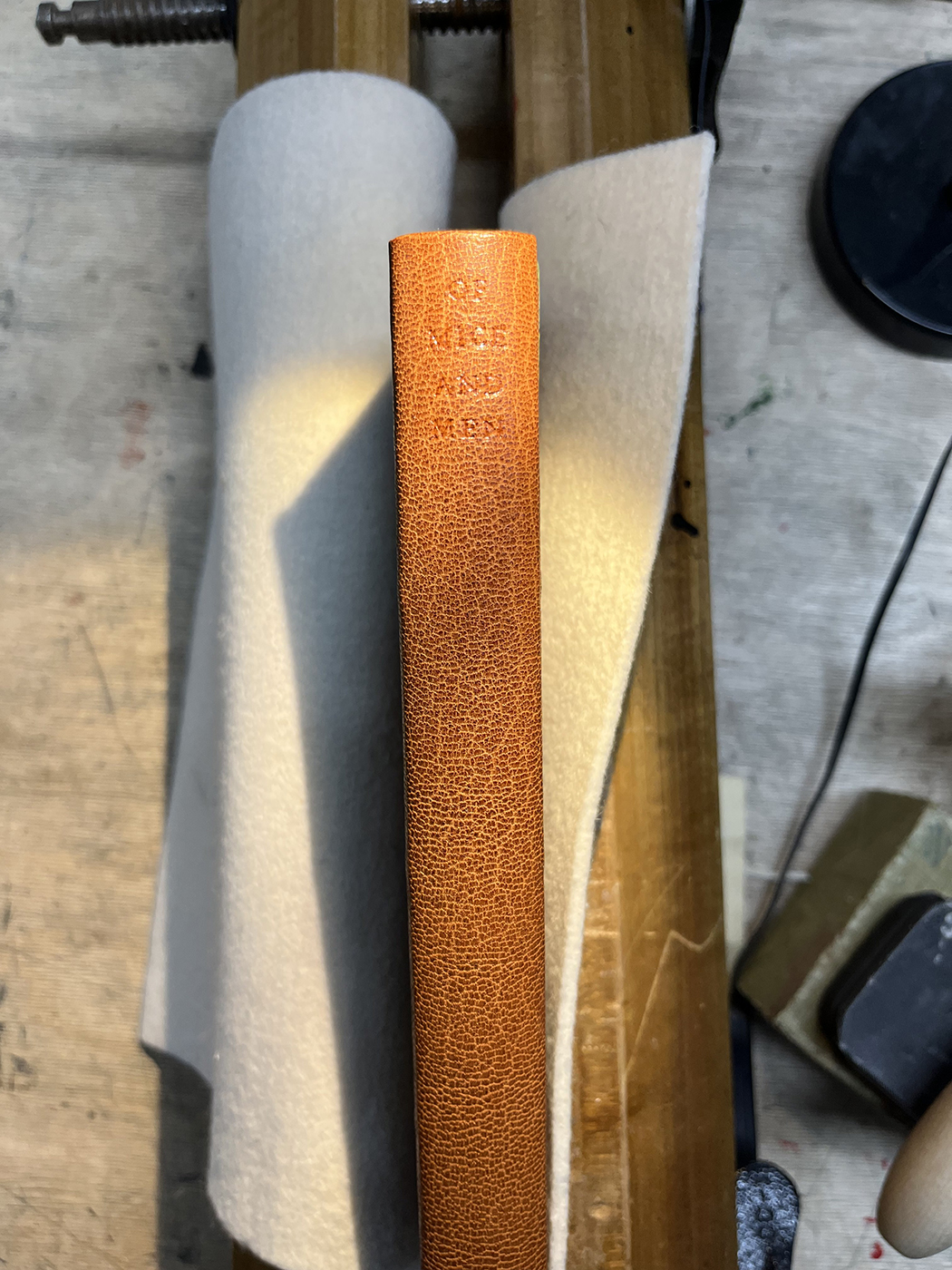
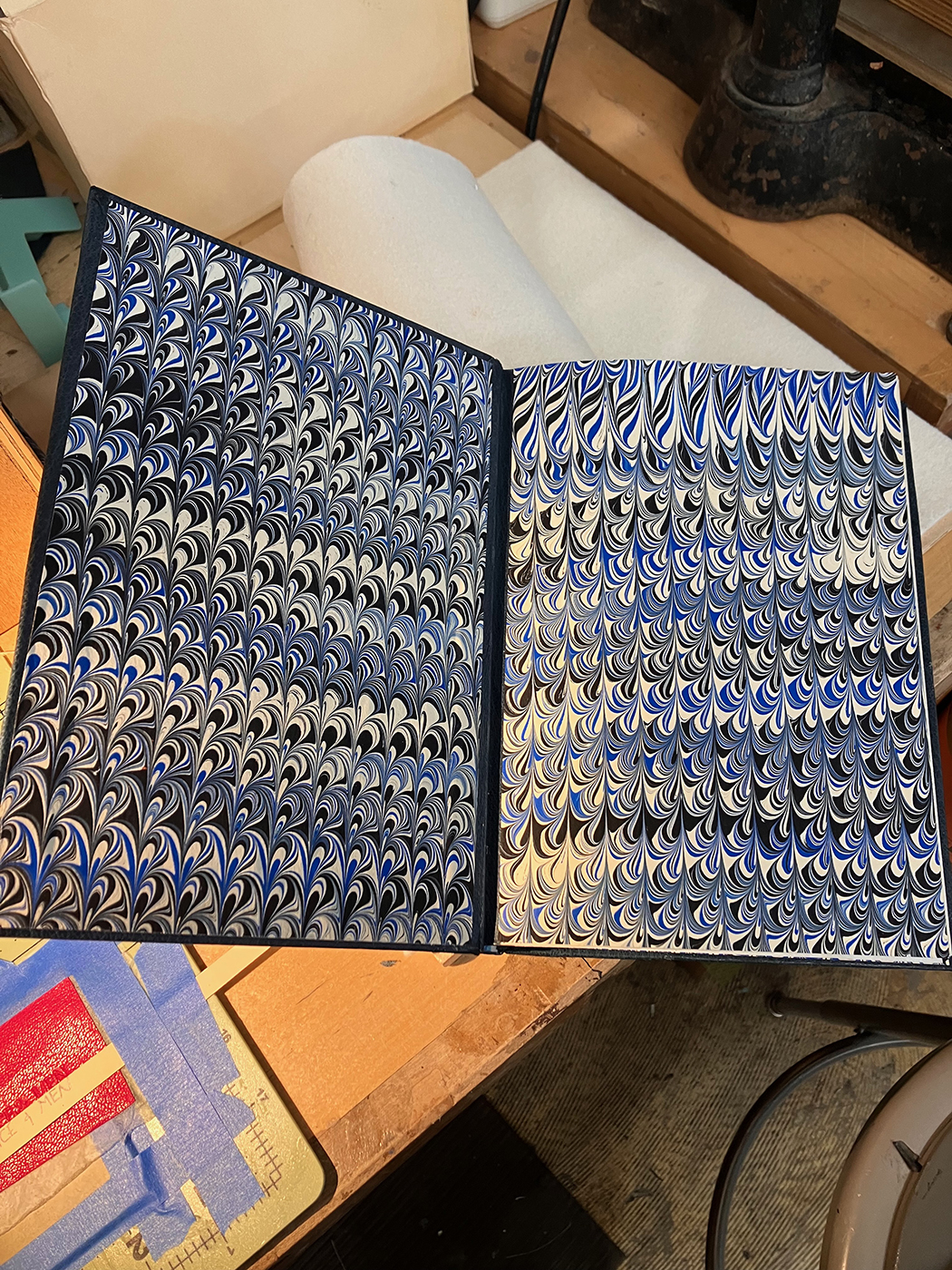
There are many variables at play when it comes to crafting a full leather design binding. The outline below goes over the general production steps, but some binders may omit steps or rearrange the following list.
- Finalizing the design: The design should be fully realized (with room for last minute alterations) including the materials, colors, and techniques. This acts as a blueprint for creating the binding, as some techniques need to be executed in a specific order.
- Experimentation: This can happen throughout the binding process, but can be helpful to do near the start to better determine how to execute a design, or how the text block should be forwarded.
- Preparing the Text Block: The endpapers are prepared and punched along with the signatures. Signatures are first sewn to stubs and then the stubs are sewn together over frayable tapes using a lap-link or all-along pattern or a combination of both.
- Rounding and Backing: A compensation leaf is added to make room for a leather hinge (attached during one of the final steps). Hide glue is brushed on the spine, before quickly manipulating into a slight round. The book is then placed into a job backer where the spine is moved with a hammer to create shoulders on either side.
- Edge Decoration, Spine Linings, & Endbands: The spine of the text block is lined with several layers and sanded smooth before attaching a hollow in order to make sure no texture is visible once the leather is attached. Before attaching the lining, the edge(s) of the text block can be decorated with paint, graphite, or gold leaf, and endbands can be sewn to the head and tail of the spine.
- Boards: The boards are laced on to the text block using the frayable tapes. The boards are shaped through sanding, lined, and shaped through sanding again. To create textures under the leather, additional layers may be cut and attached to the boards.
- Pare Leather: The thickness of the leather needs to be reduced to around .6mm by feeding the material through a paring machine, which incrementally thins the leather. Additional paring occurs along the spine, at the turn-ins, endcaps, and edges through the use of a paring knife and/or spokeshave.
- Covering: Covering an entire binding in leather can be nerve racking. All of the necessary tools should be in arm’s reach for the moment they are required. Once the leather is placed on the book, the excess leather is then folded around the edges. This may seem simple, but finesse is required in shaping the endcaps with pointed ears, and skill is needed when cutting and pleating the corners to develop a near invisible seam. After covering, the book is put to rest inside a felt blanket under a bit of weight.
- Design Work: This step can occur before and/or after covering: it all depends on the specific techniques required to execute the design. Techniques seen on the set book projects this year include leather onlays (Ascona, back-pared, cushioned, tooled, feathered, puckered), tooling in blind and with leaf (gold and palladium), hand-dyed leather, reliefs and embossing, embroidery, and inlaid mice feet, fur, and bead.
- Final Touches: Once the exterior is complete, the interior needs to be finished with the attachment of a leather hinge at the joint. Then a piece of decorative paper is placed on either side of the hinge. Many students made custom marbled or paste papers for this portion, but a few selected handmade papers from Cave Paper.
Set Books
Louise Capizzo BB ’24
Working within a minimalistic design to highlight injustices felt by the main characters, Louise covered her book in a navy blue goatskin embellished with an orange Ascona onlay, terra cotta tooled onlay, blind tooling, and hand-tooled titling piece in terra cotta.


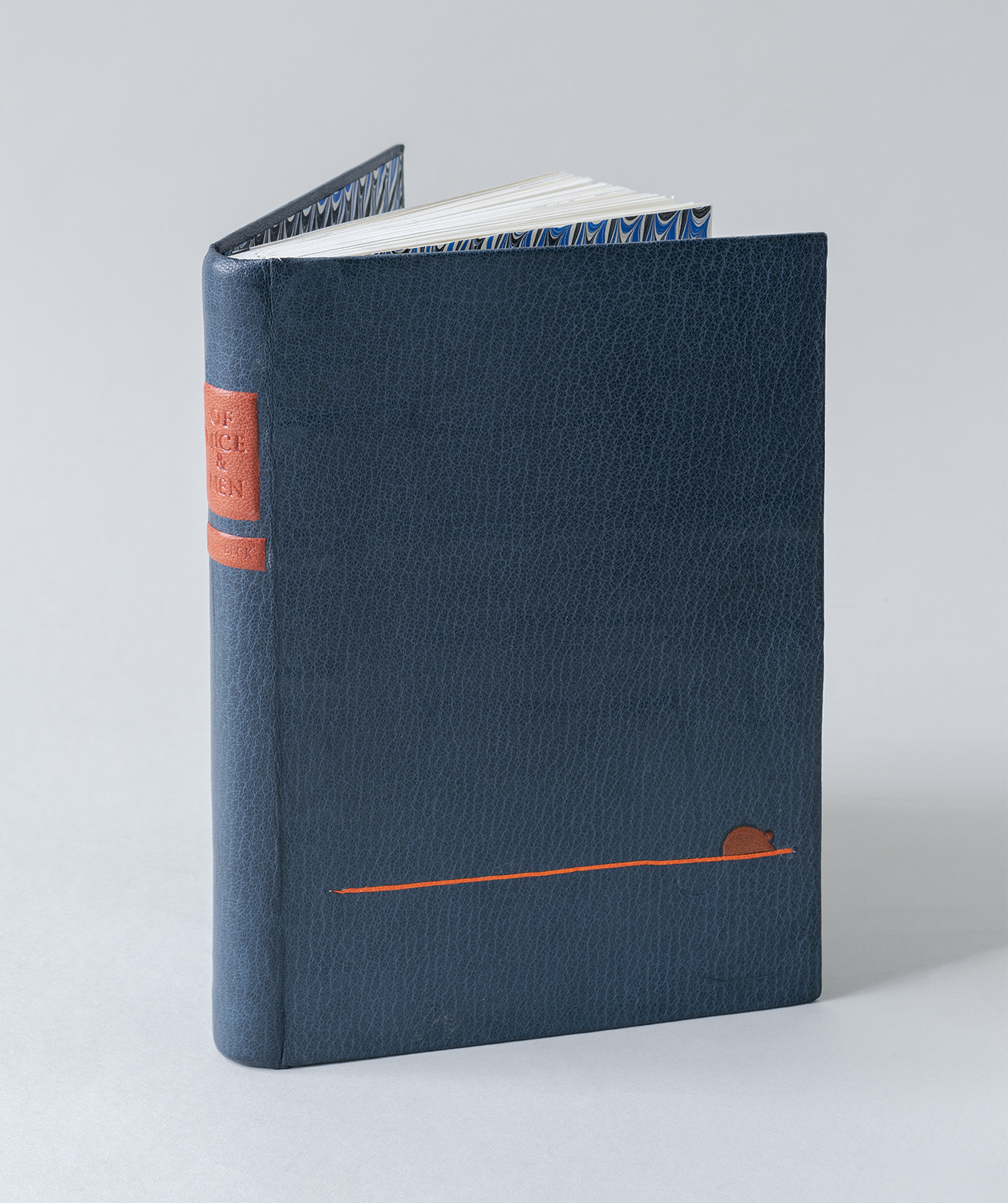


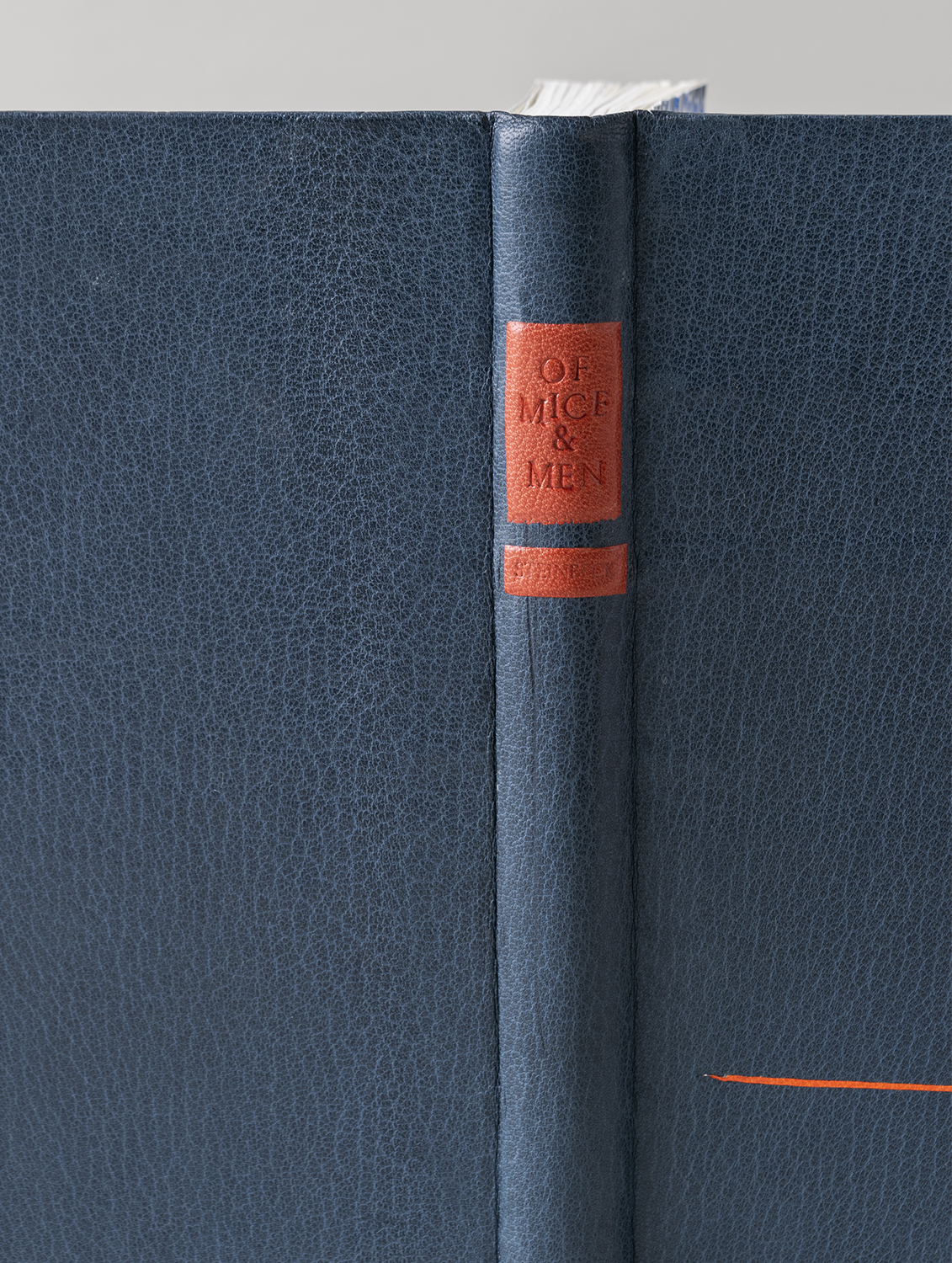
Elizabeth Grab BB ’24
Elizabeth’s design puts a spotlight on the character simply referred to as Curley’s wife by framing her death scene on the cover. Using a verdant green goatskin as a nod to the landscape, the rest of the design is blind tooled with tooled onlays in red and pale blue and puckered black leather onlays. The title is tooled inside the character’s eyes in palladium.
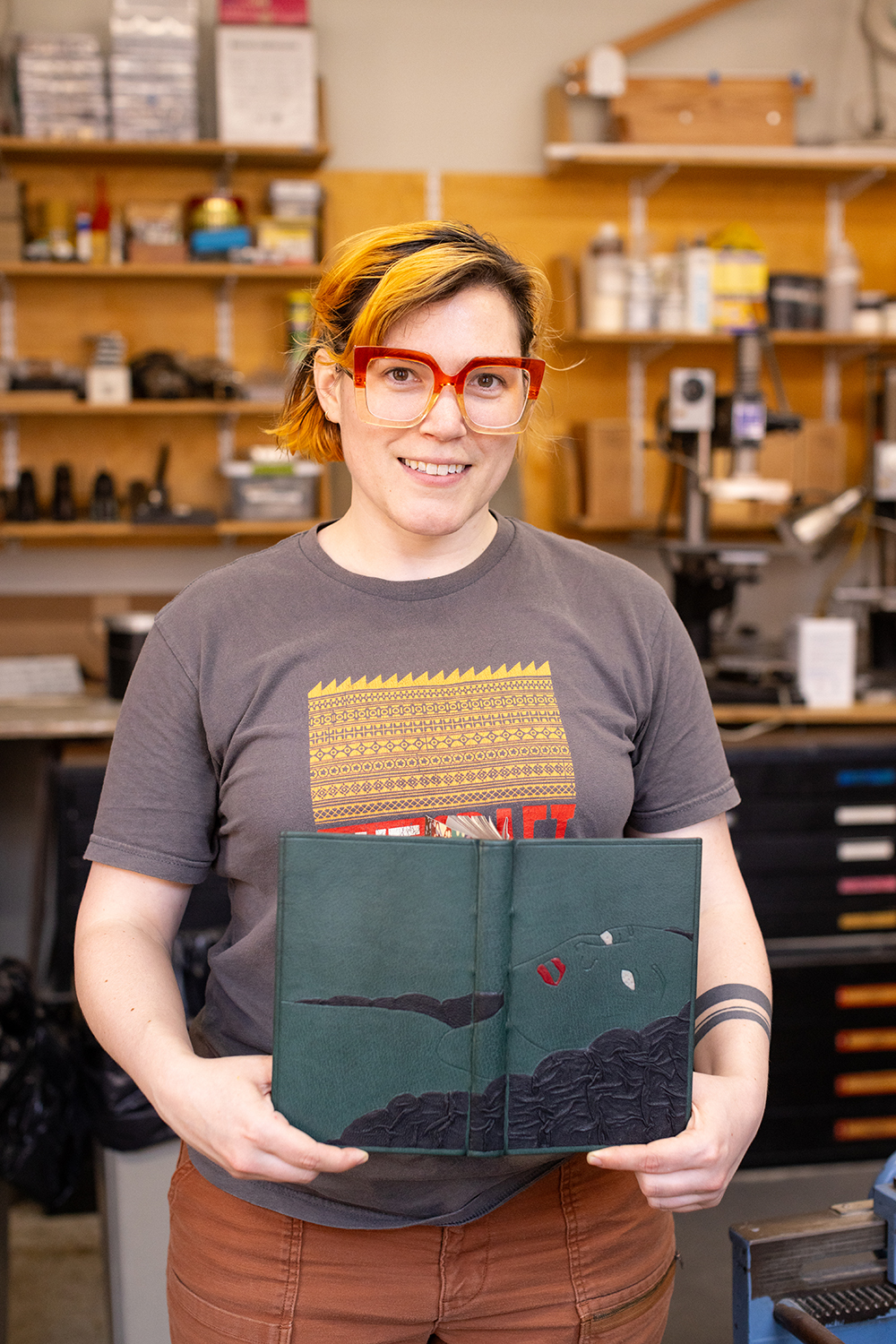


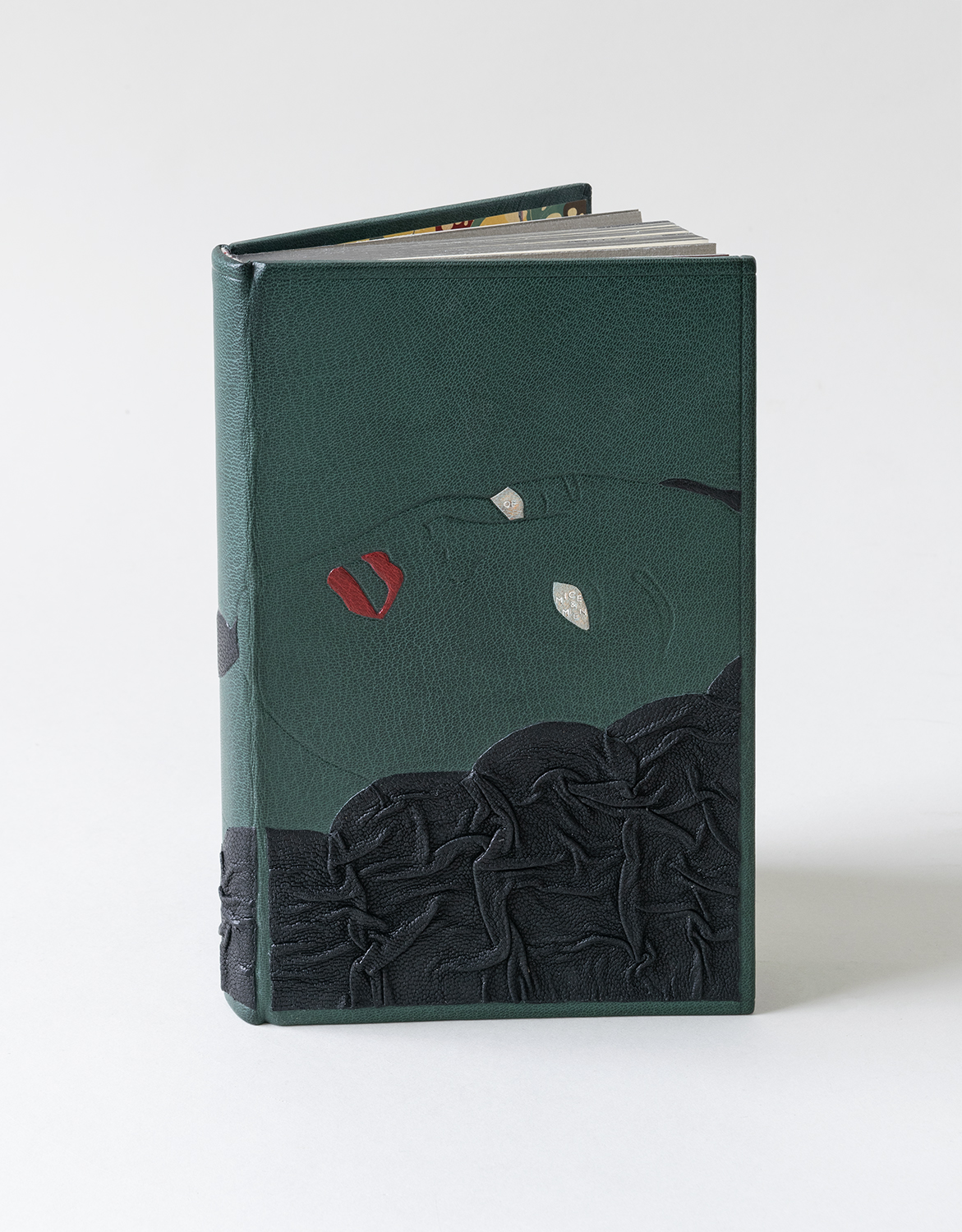
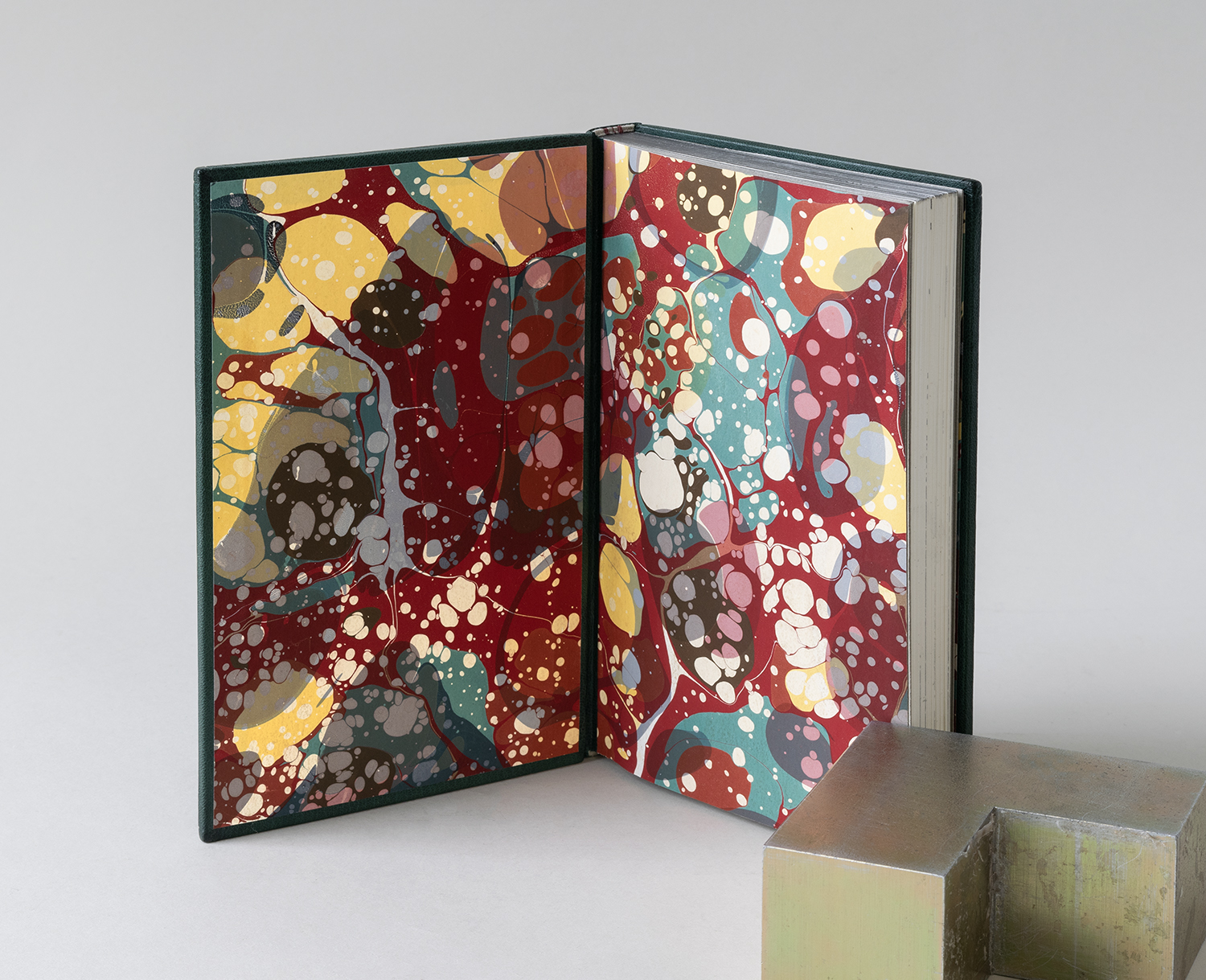

Fox Maasch BB ’24
Fox uses two simple design elements, a dead mouse and zigzagging river, to capture the insecurities of the main character and the setting of the story. The book is bound in tan goatskin embellished with onlays in beige and pink goatskin, undyed calfskin, and puckered blue suede, inlaid mouse feet, and palladium tooling for the eye and title.
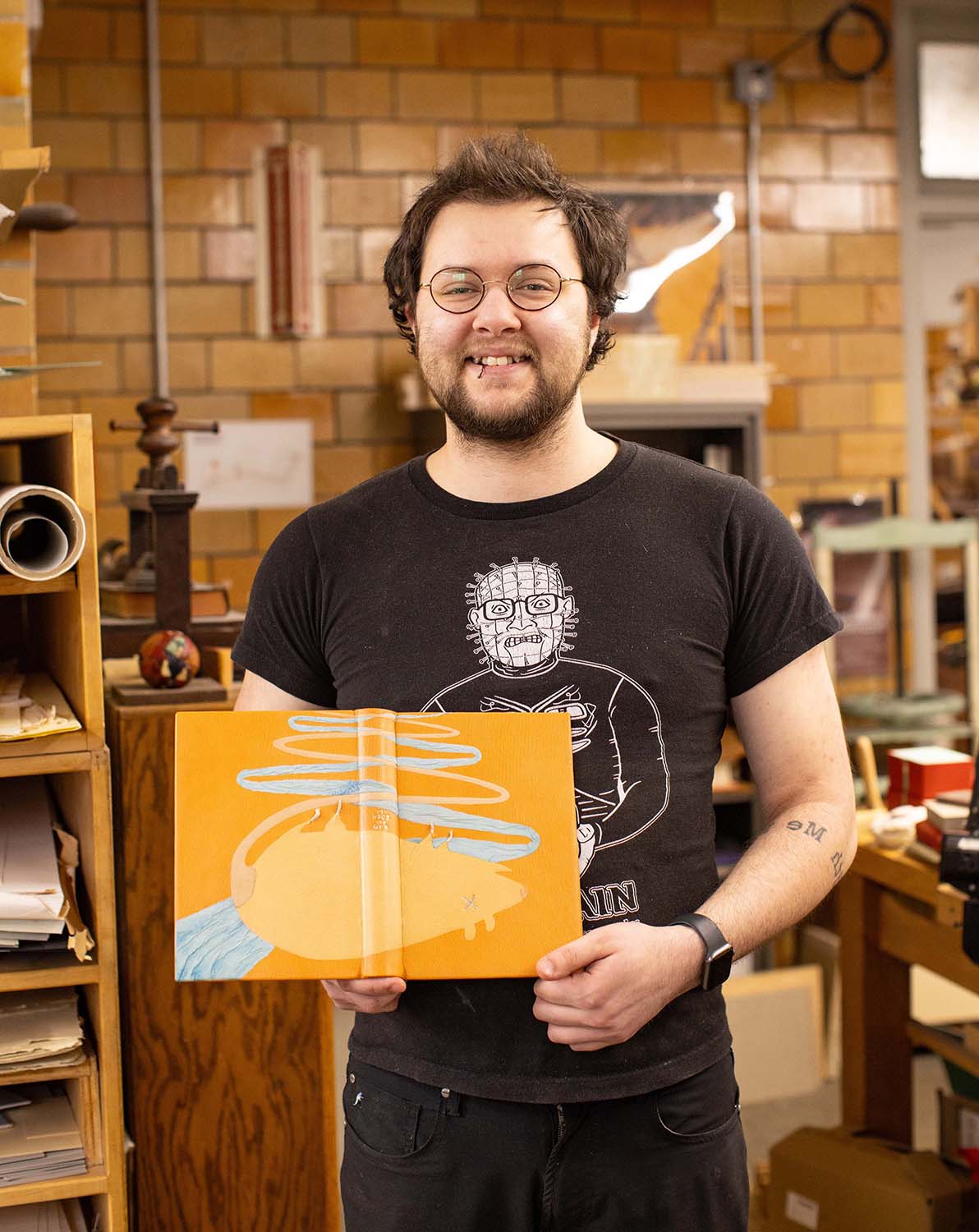
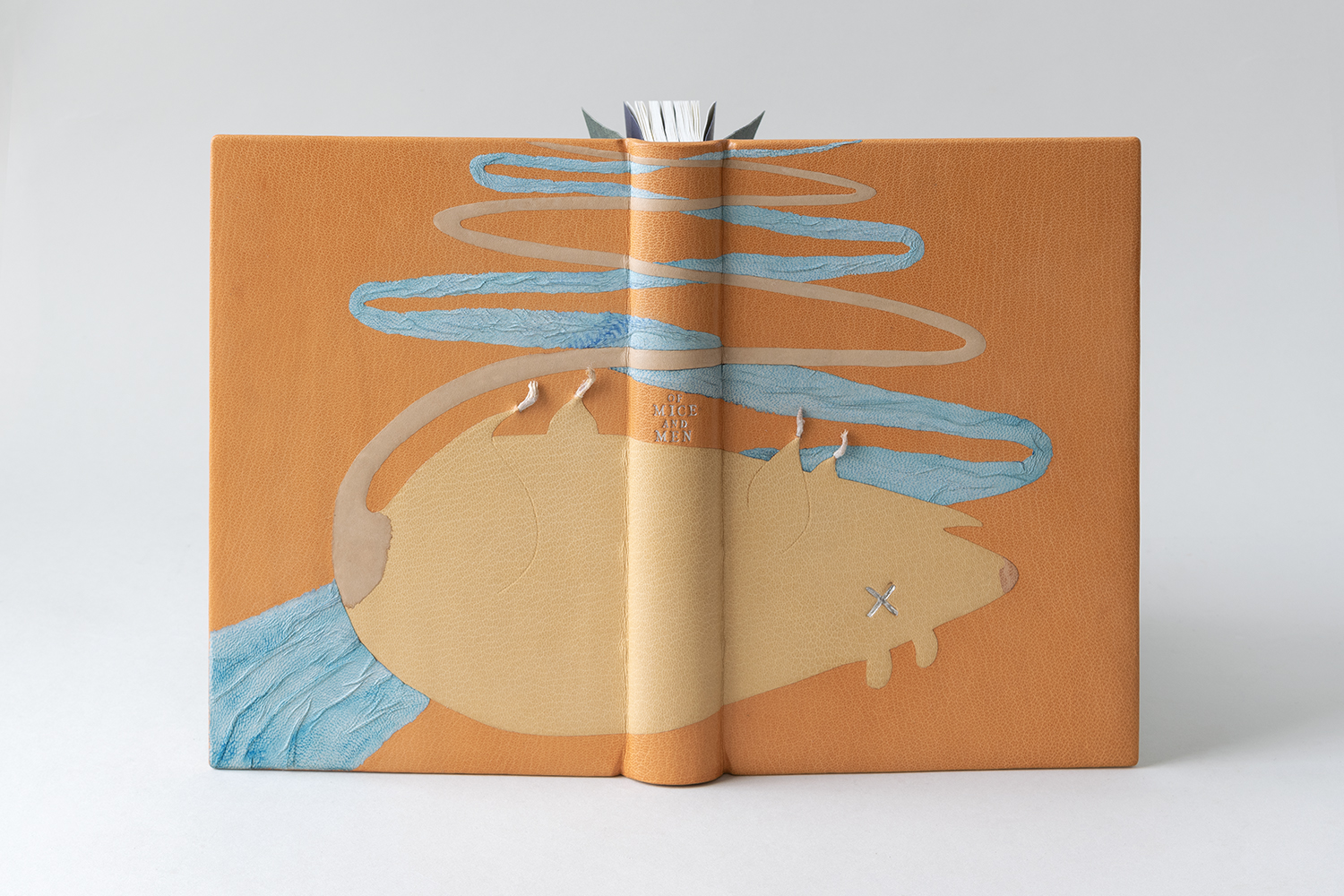
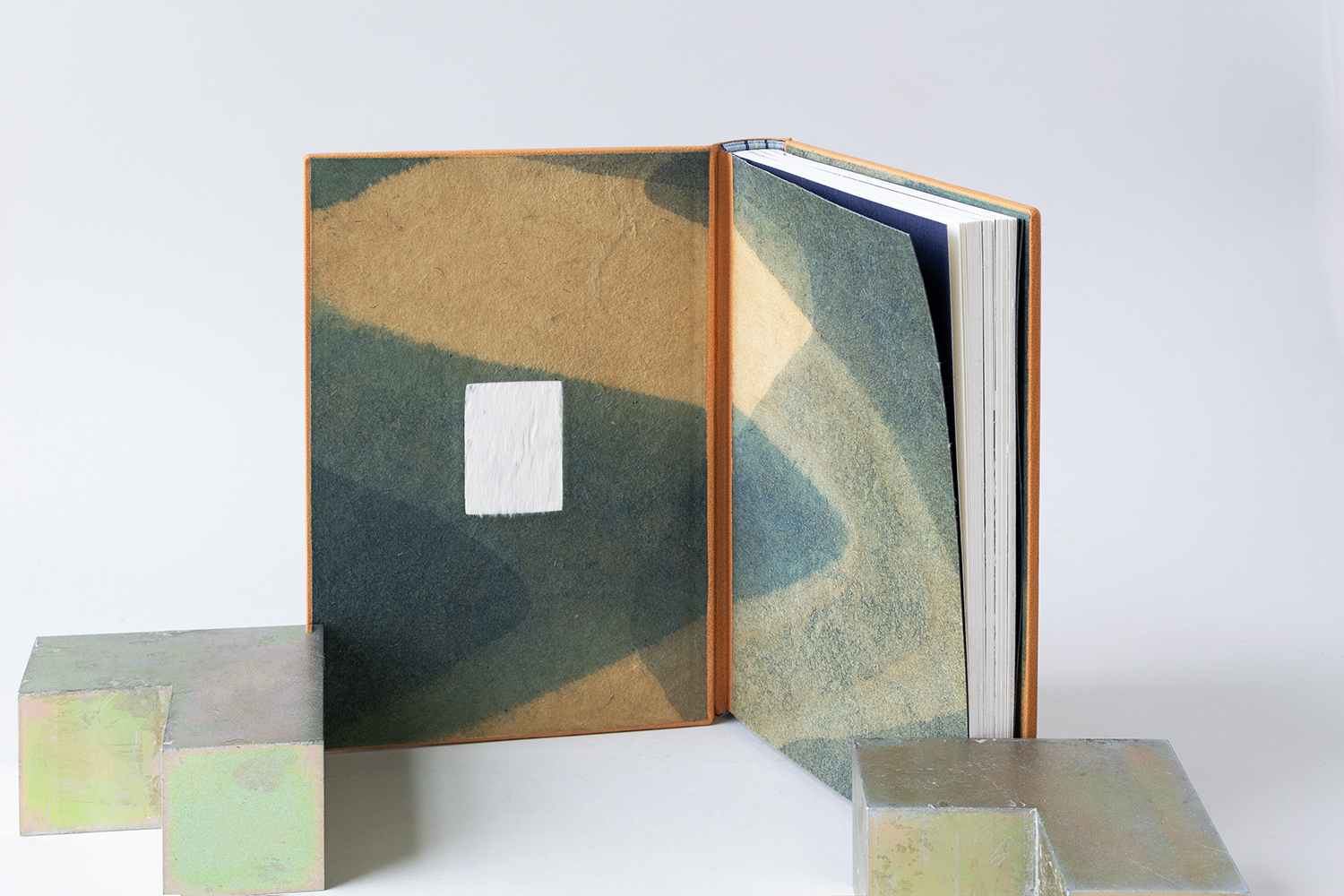
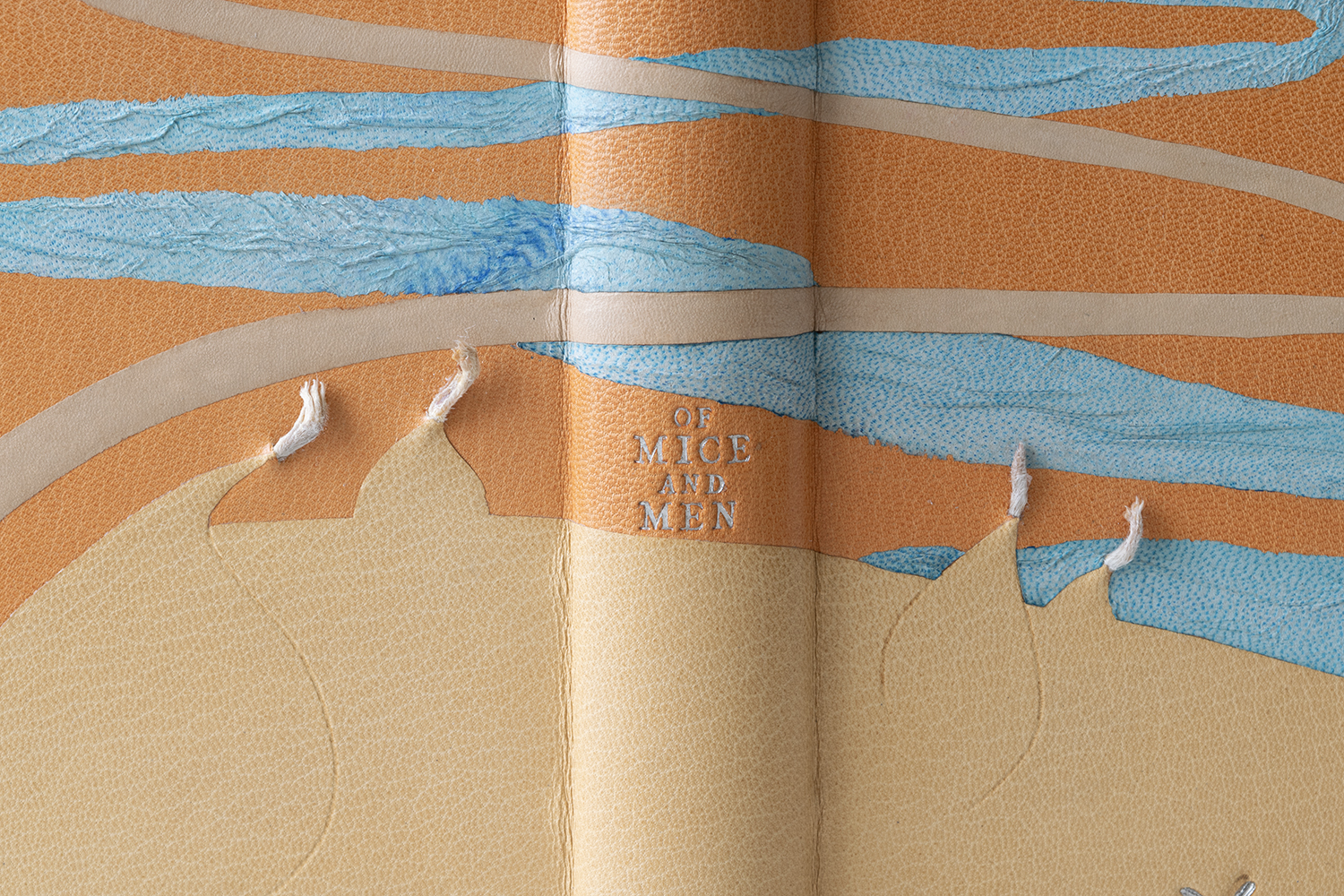


Jacqueline Martin BB ’24
The design on Jacky’s binding is inspired purely by the landscape of the setting, which is so beautifully described by Steinbeck. The medium brown goatskin is formed around reliefs built on the boards and textured by embossing sandpaper and manipulating the surface with a bone folder. The title and author are tooled in gold leaf.
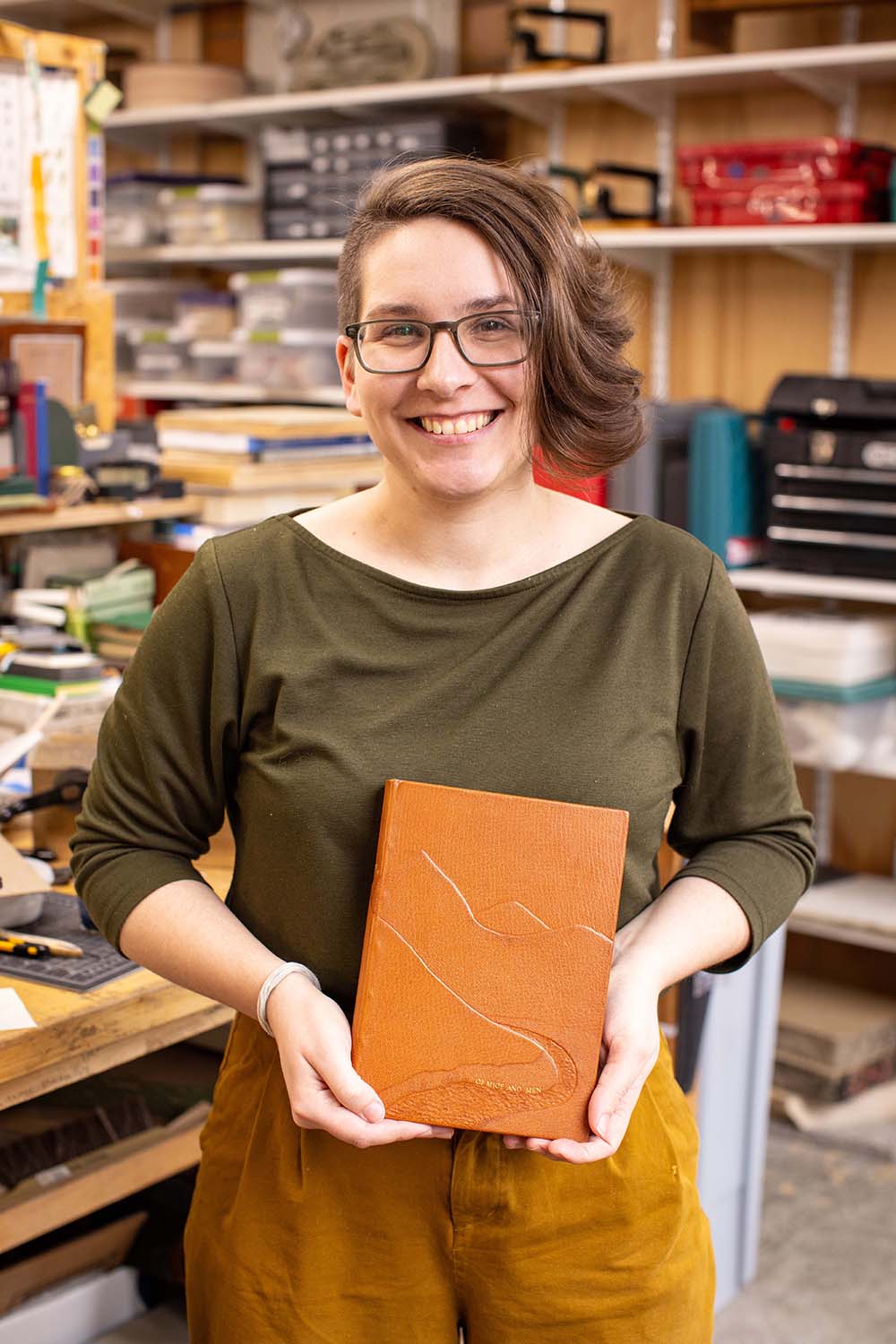

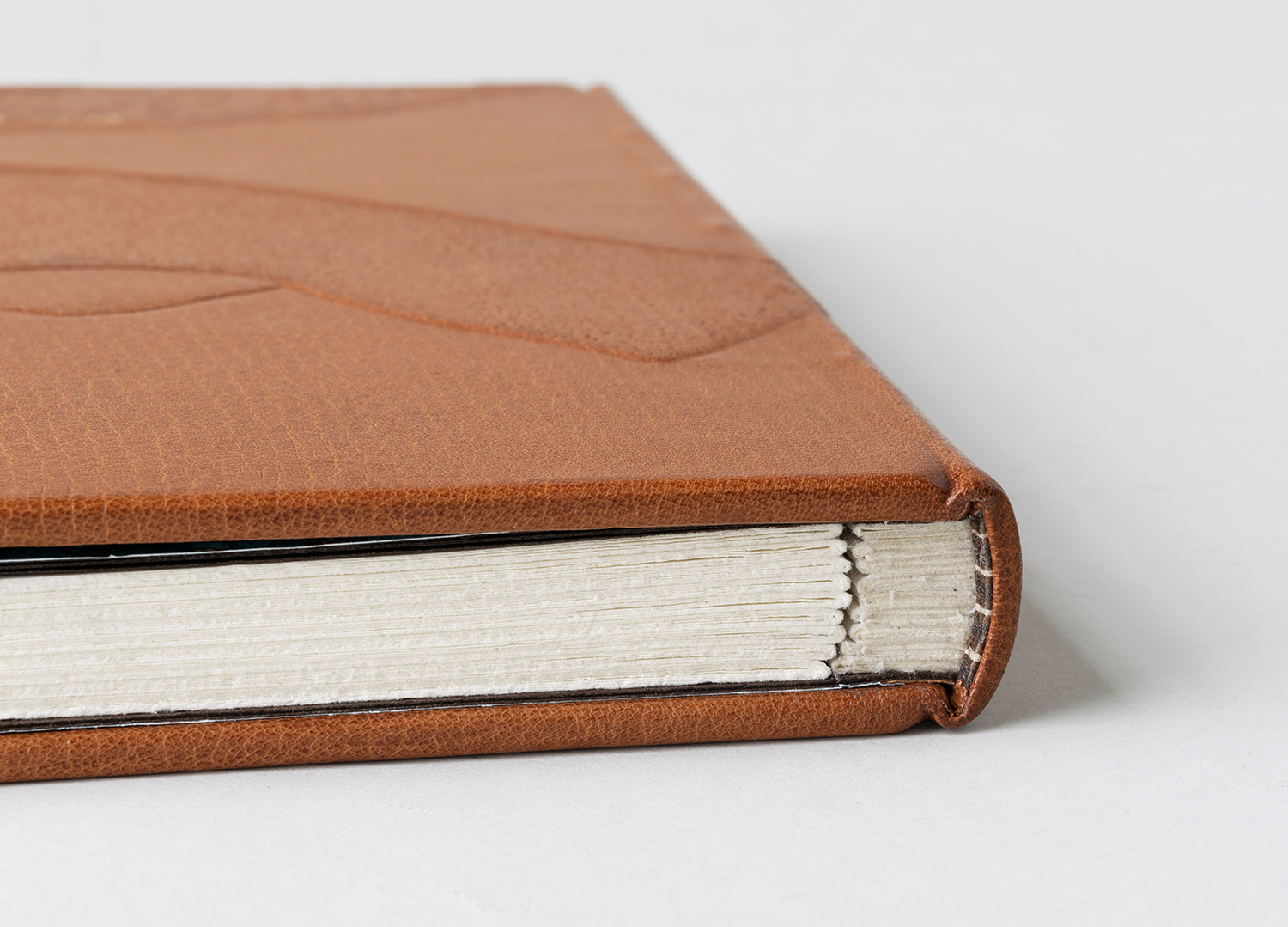
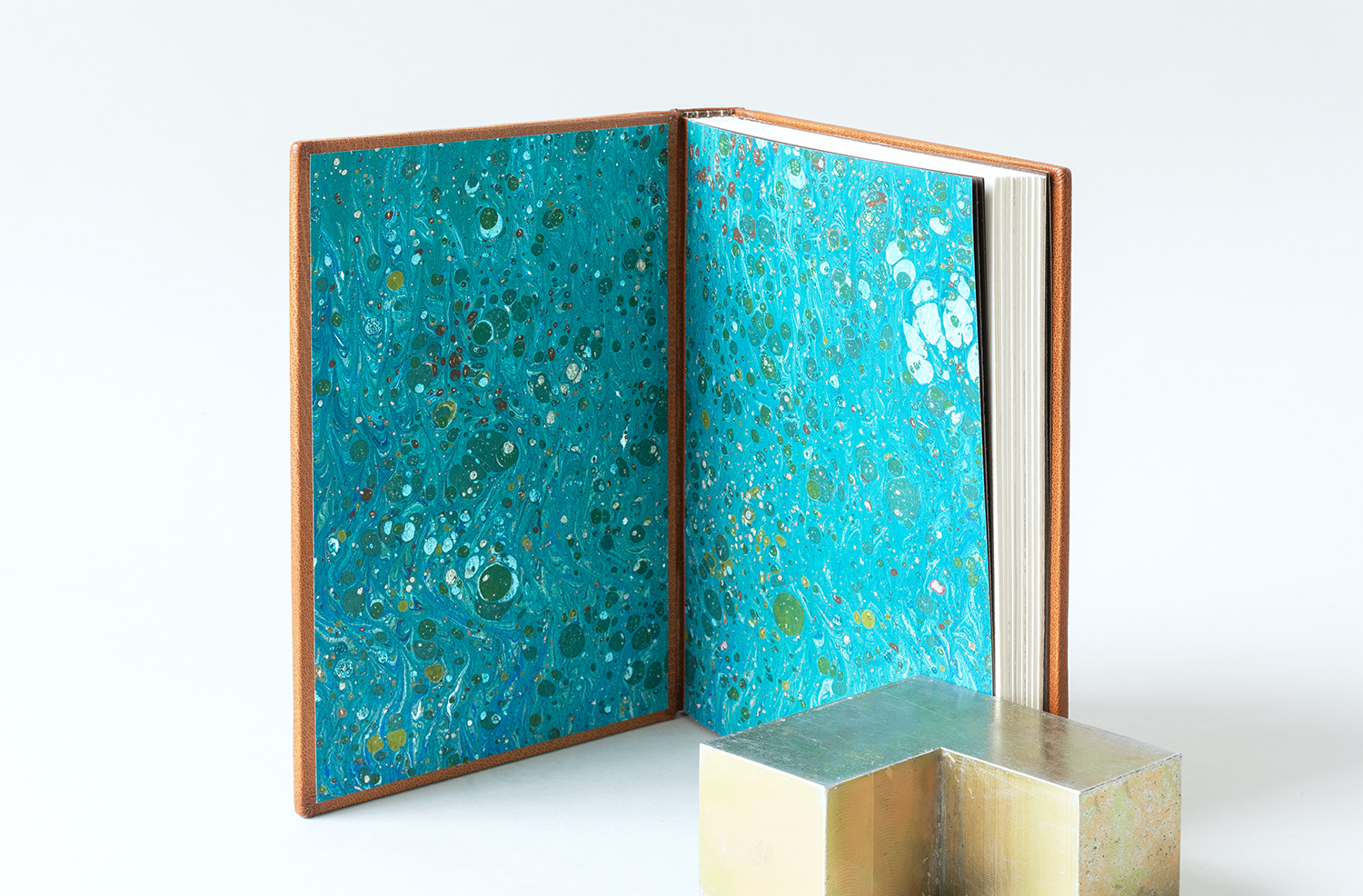
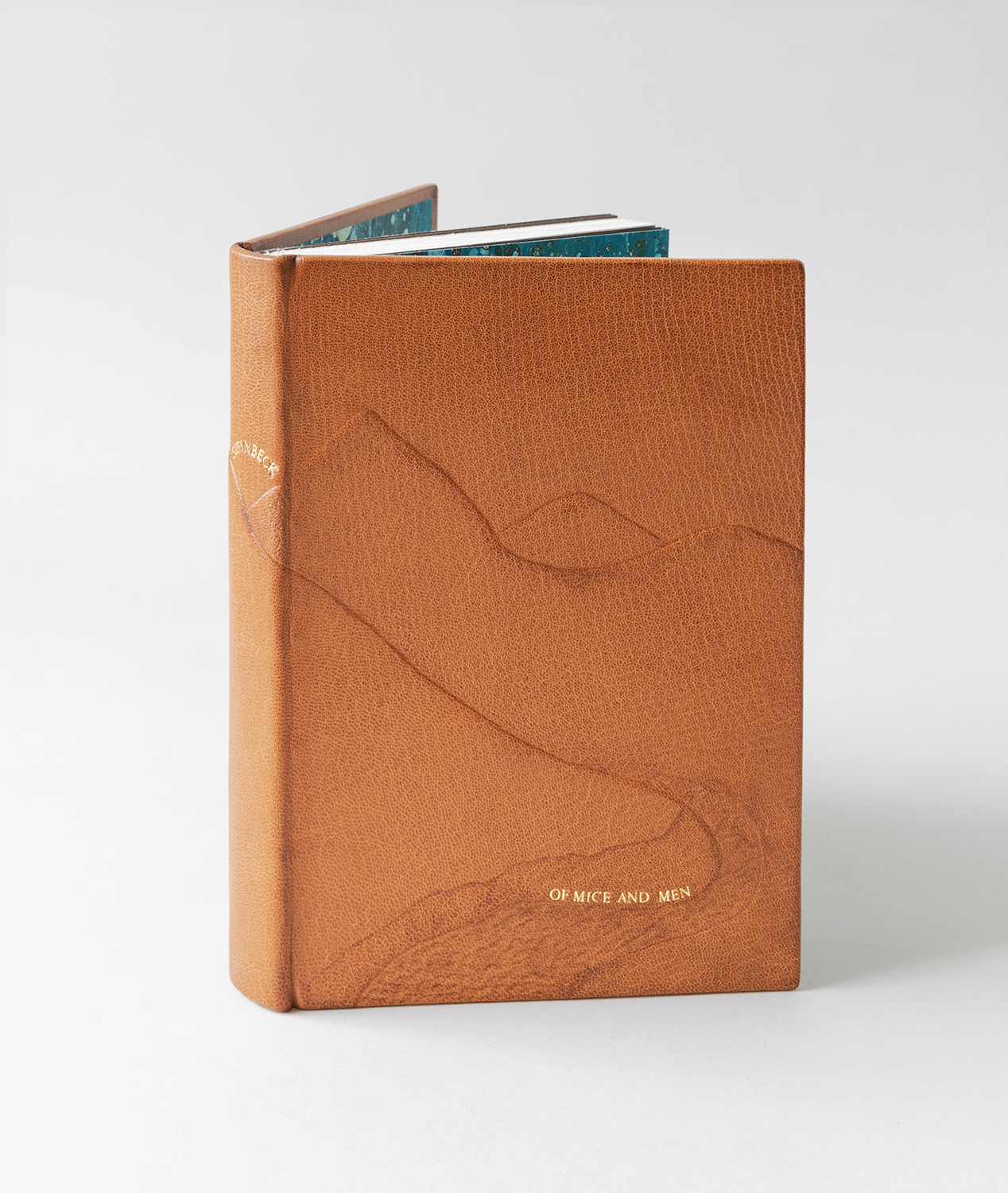

Spike Minogue BB ’24
With a background in design, Spike pulled her inspiration from the cover of the 1937 edition. Spike’s binding is bound in a bright orange goatskin and is embellished with teal and crimson feathered onlays, which are used for the title and a blood stain on the back cover. Author’s name is blind stamped.
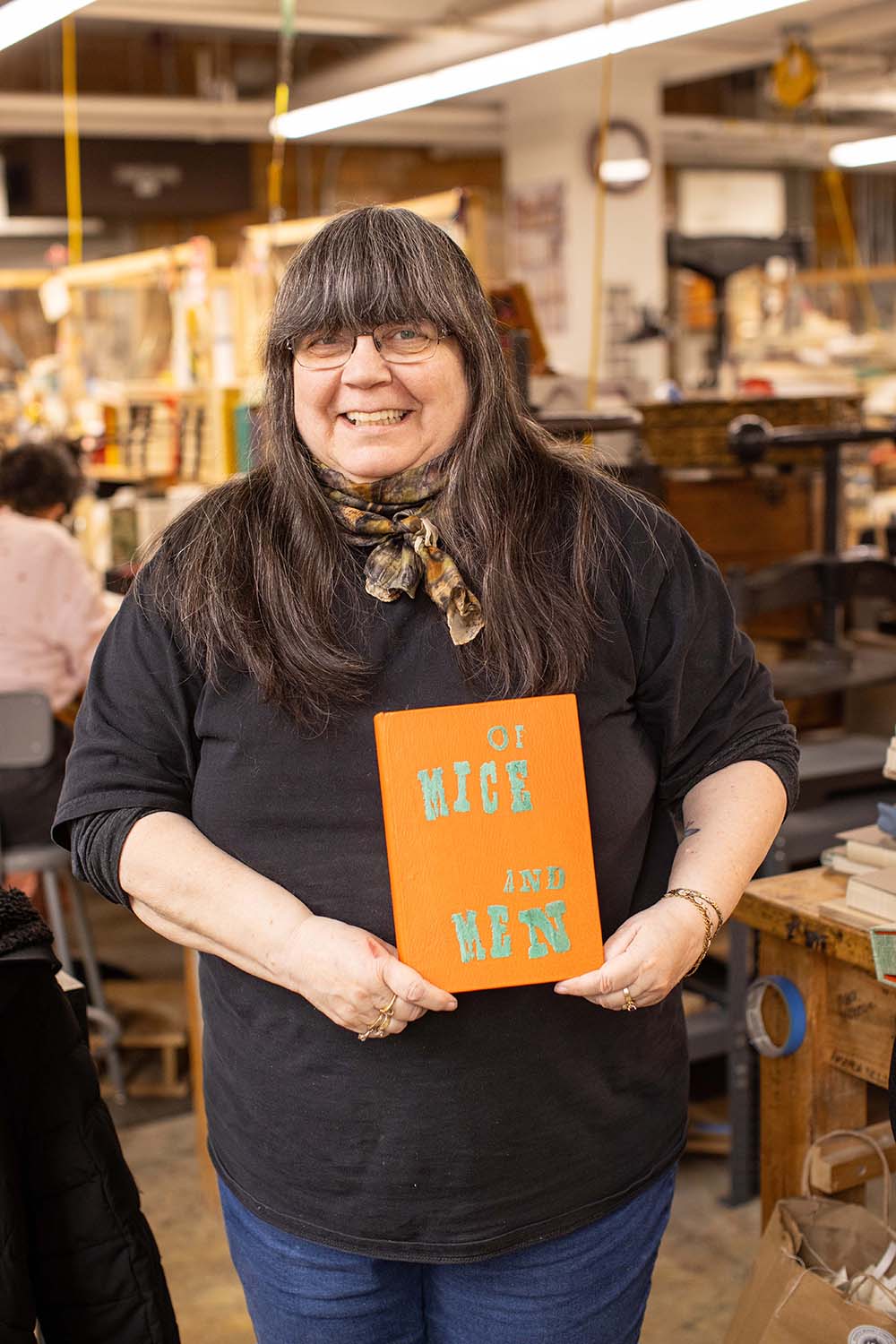
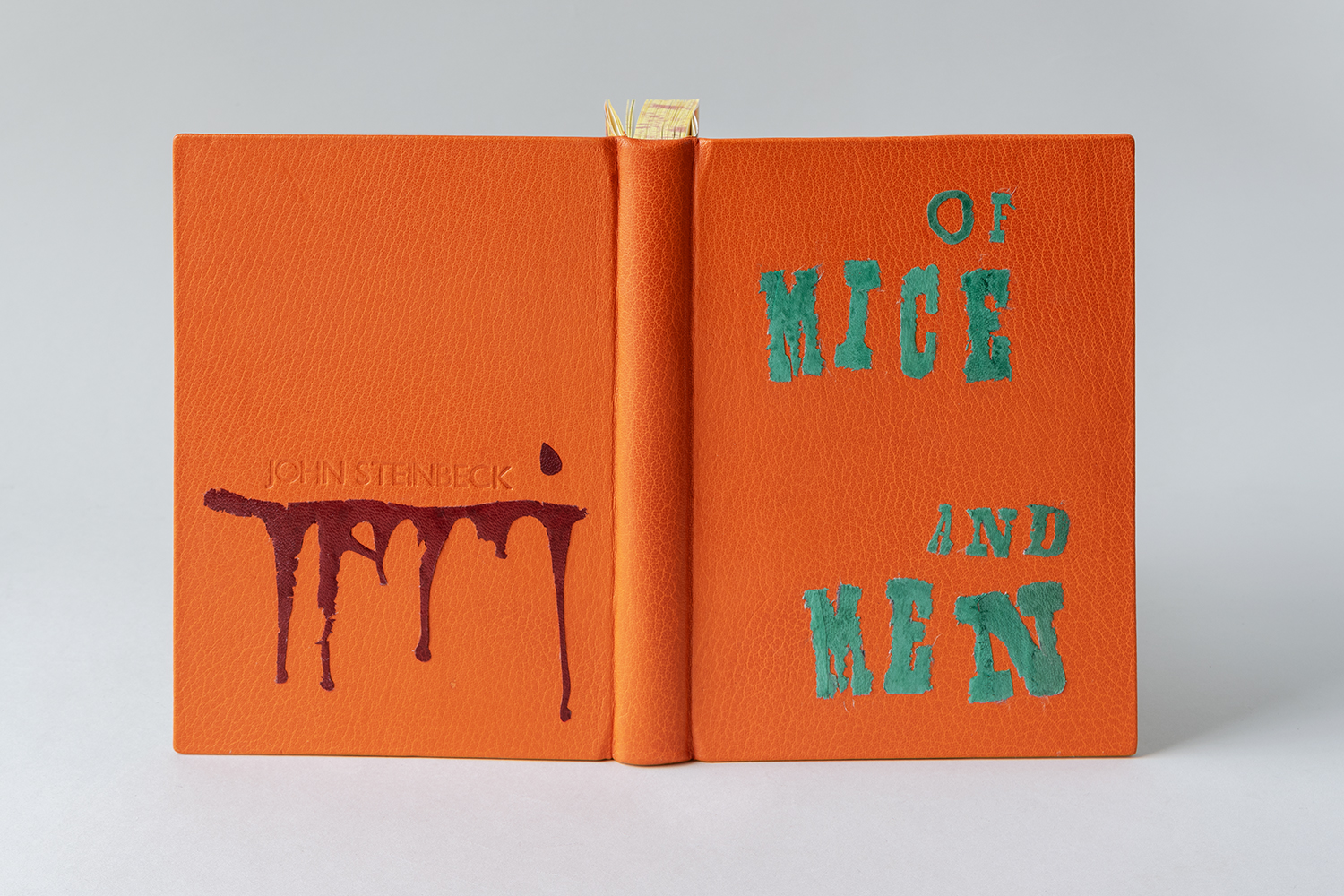

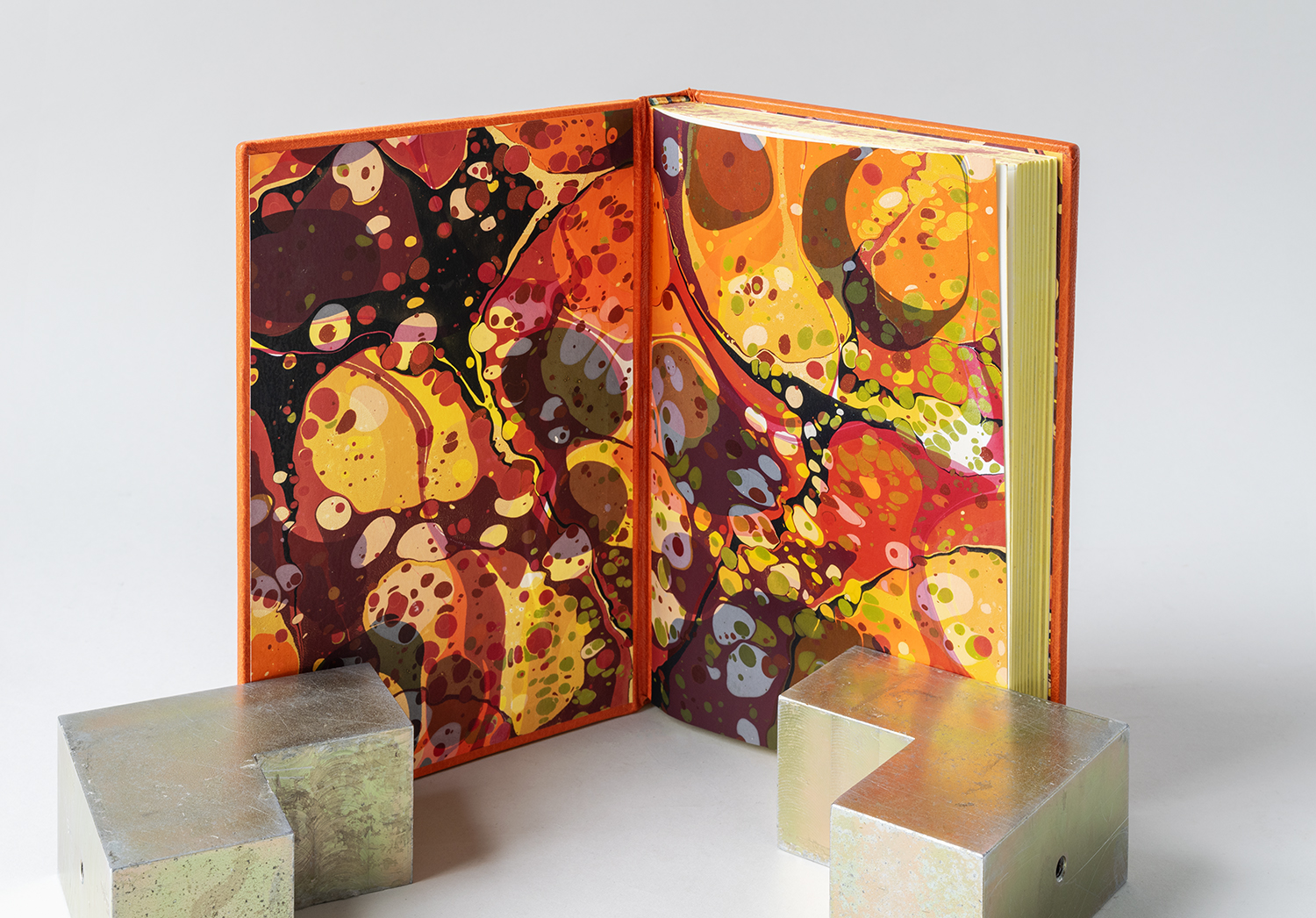
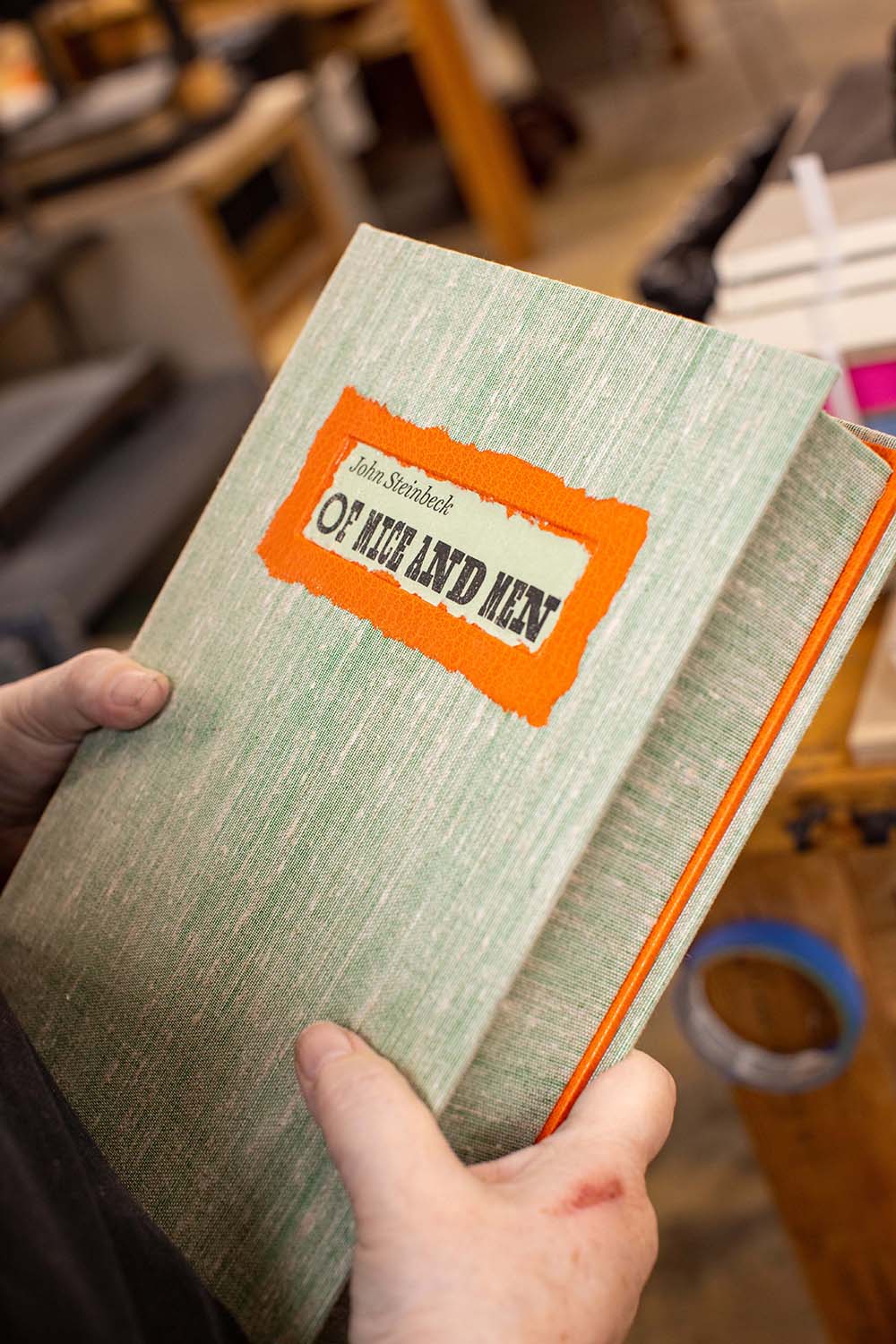

India Patel BB’24
India pulled from Steinbeck’s colorful description of the Salinas Valley landscape for her design. The terrain is suggested with an asymmetrical grid of dyed goatskin. The colors are artfully arranged to suggest a river running through a valley. The binding is covered in a medium brown goatskin, embellished with hand-dyed goatskin tooled onlays with the title hand tooled in gold leaf on the spine.
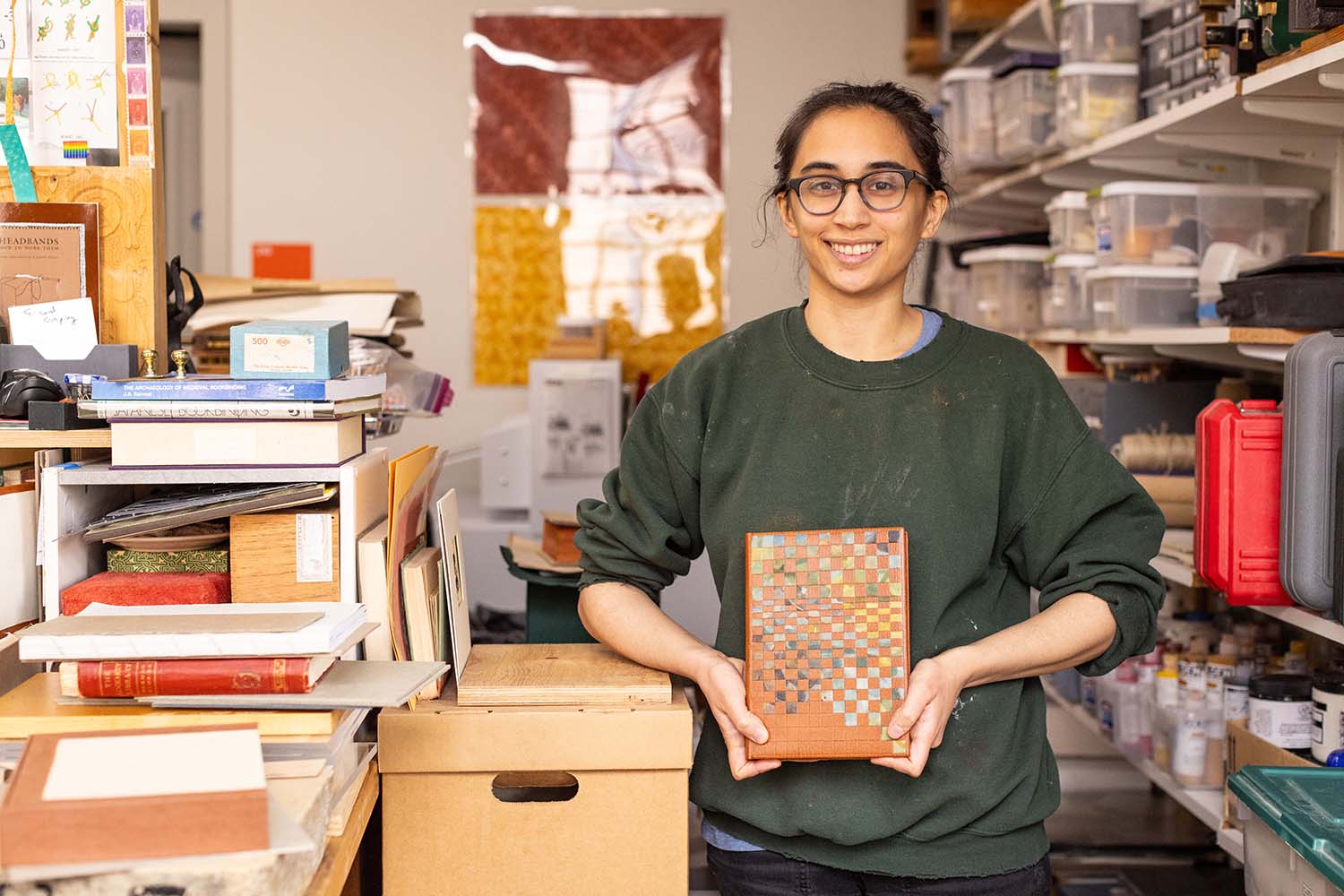
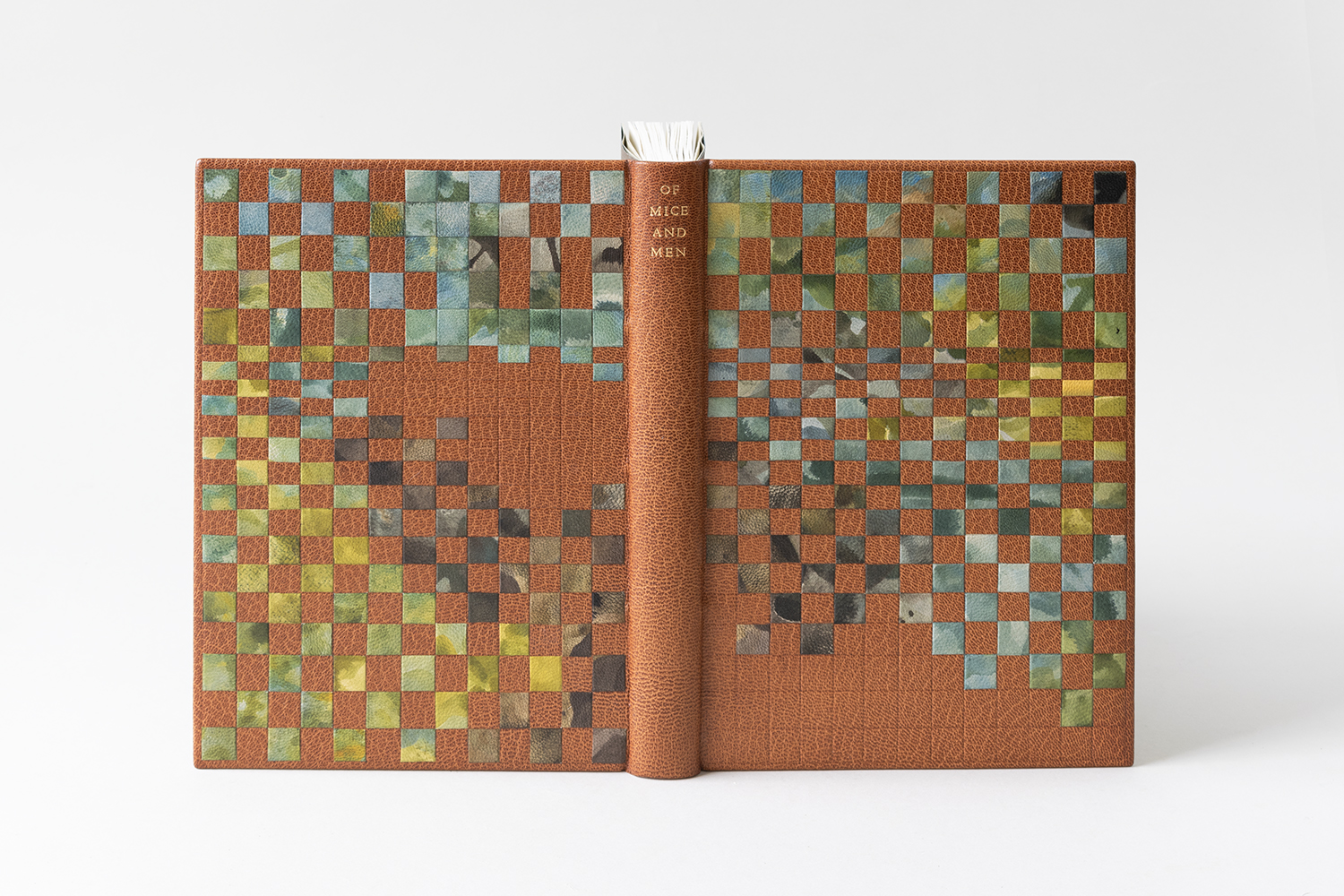
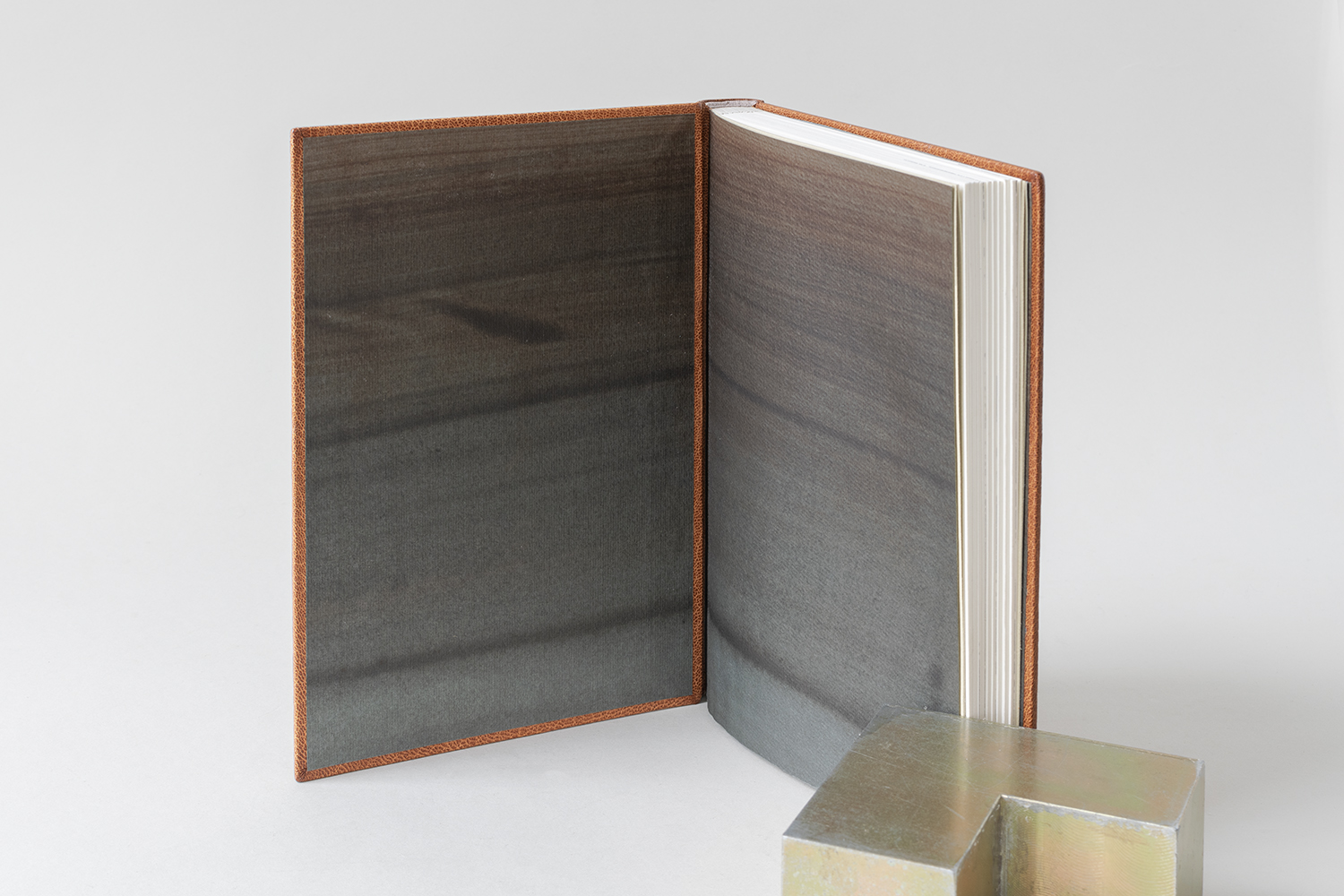
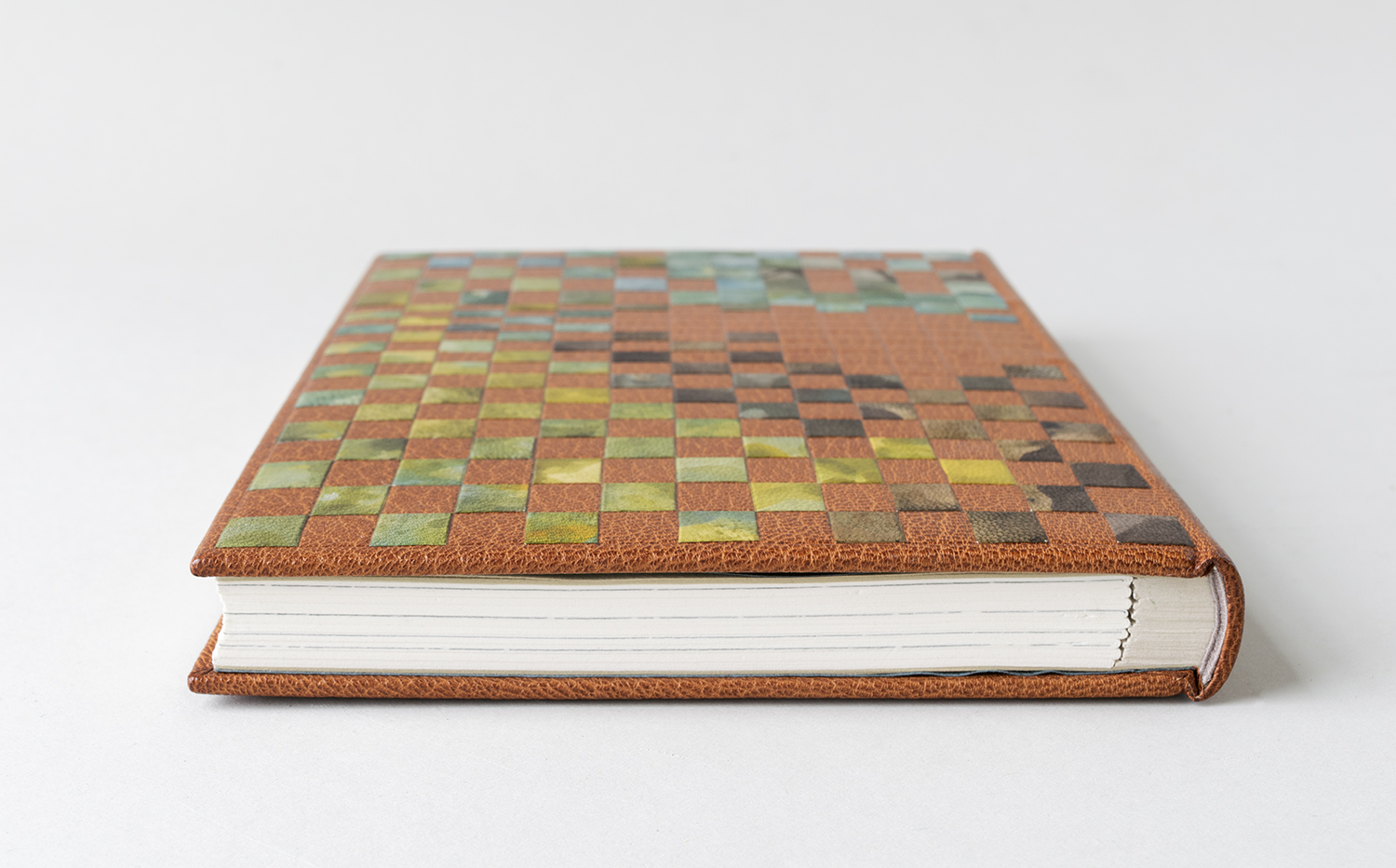
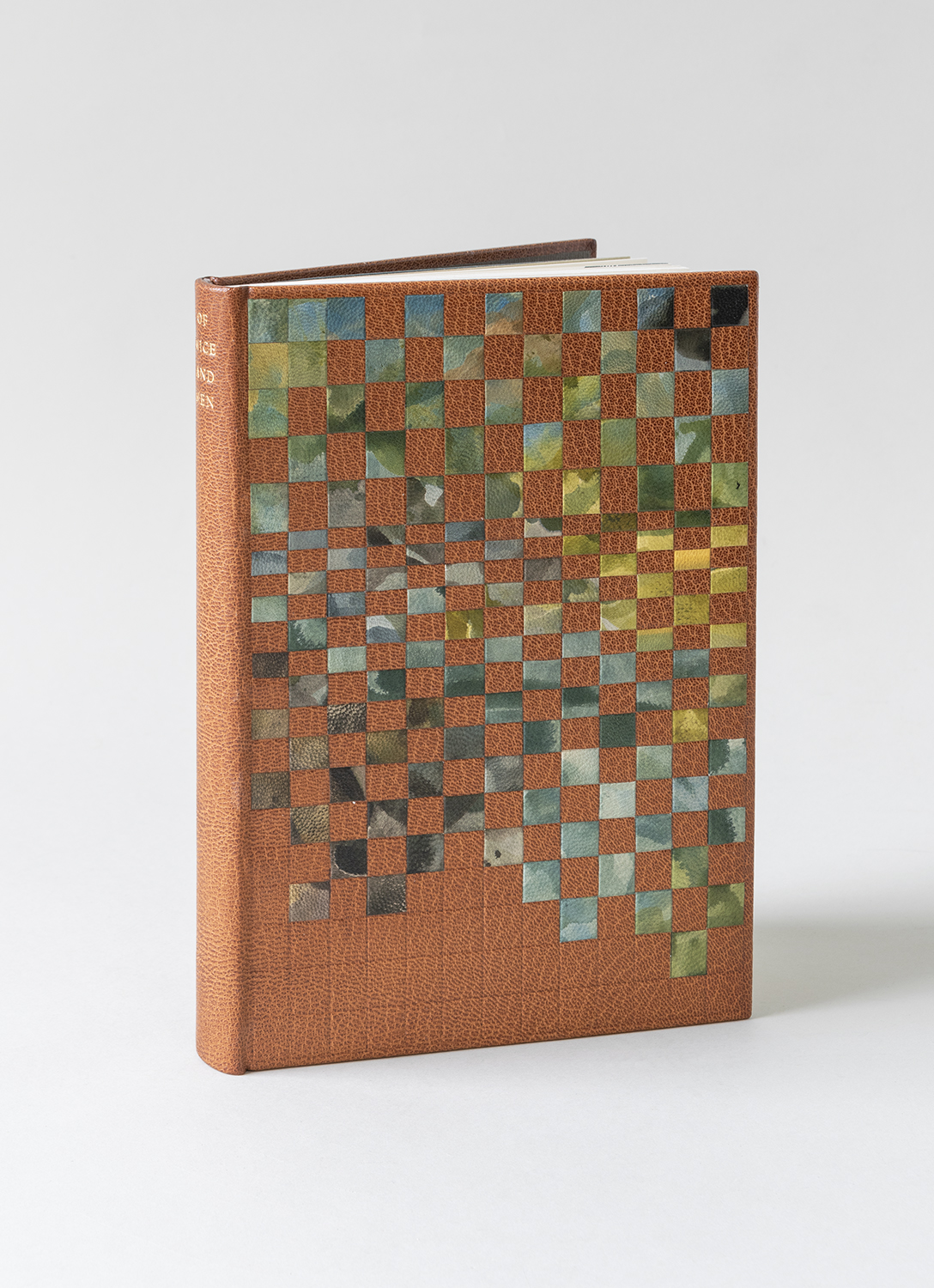
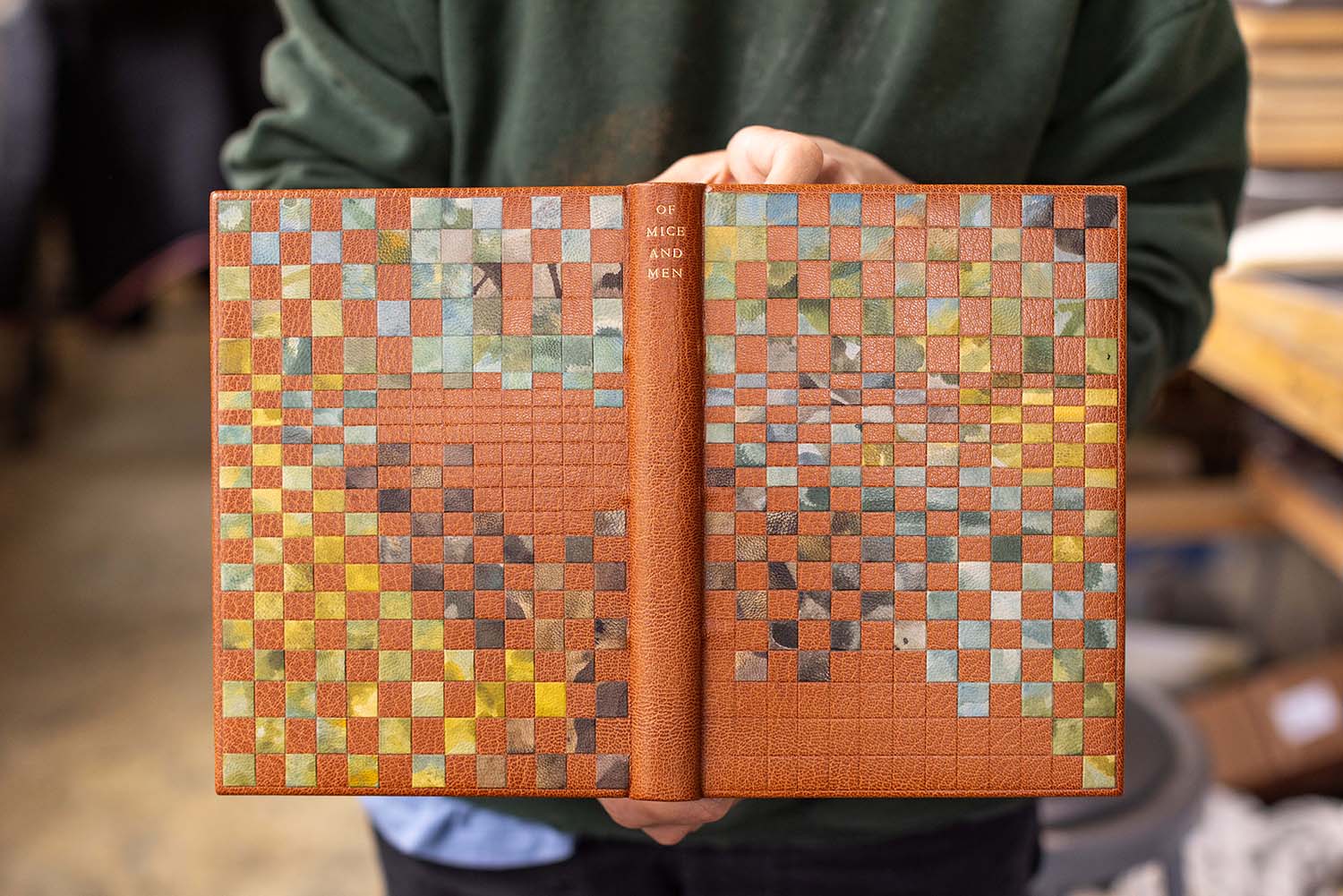
Jennifer Pyburn BB ’24
Jennifer’s design from the front captures her own feelings about the story while the back makes a more direct connection with the illustration of a mouse (representing the main character) and stars (dreams of owning land). The binding is covered in a dark blue goatskin embellished with palladium and gold tooling, tooled onlays in light blue and undyed goatskin, and an inlaid bead for the mouse’s eye.
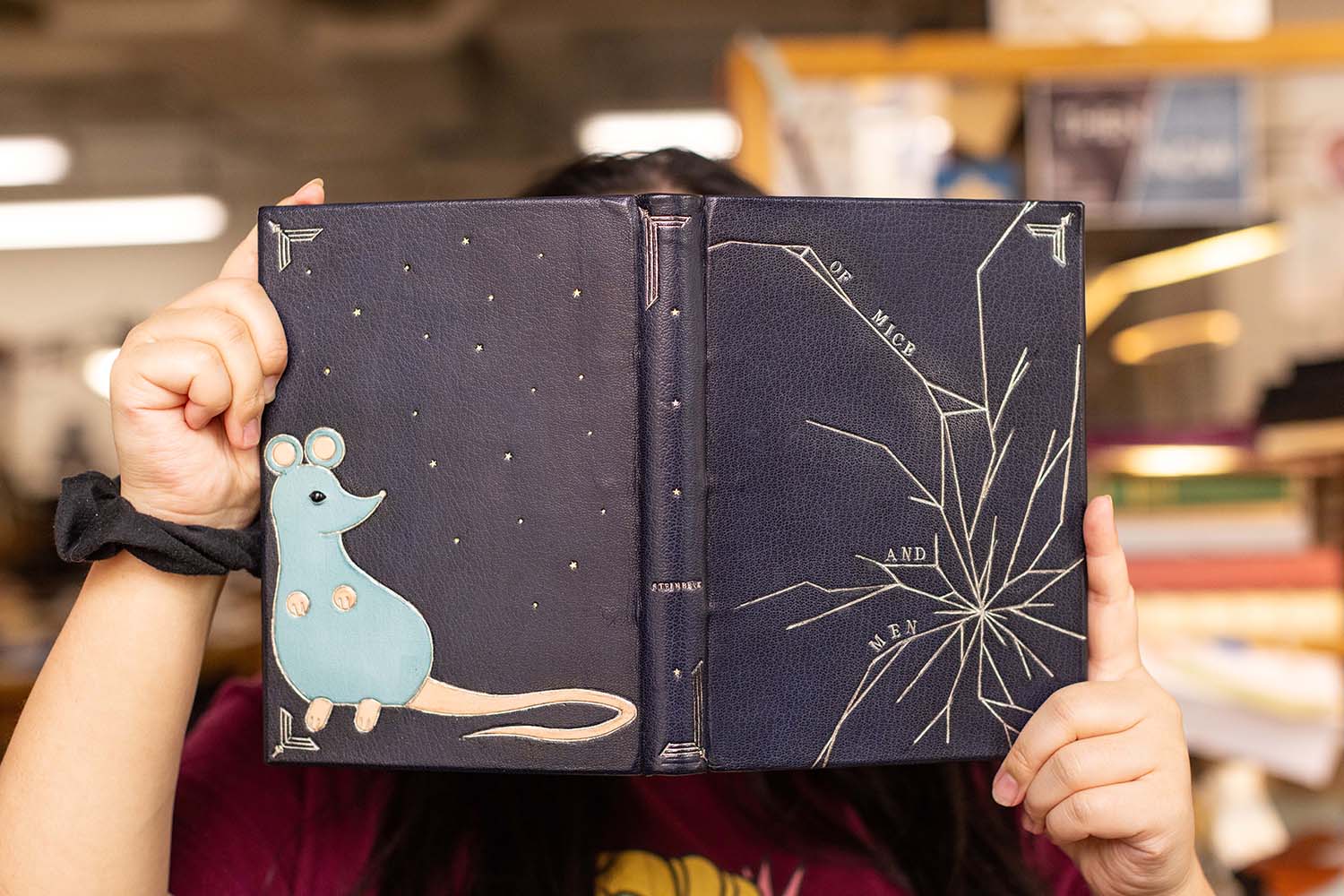
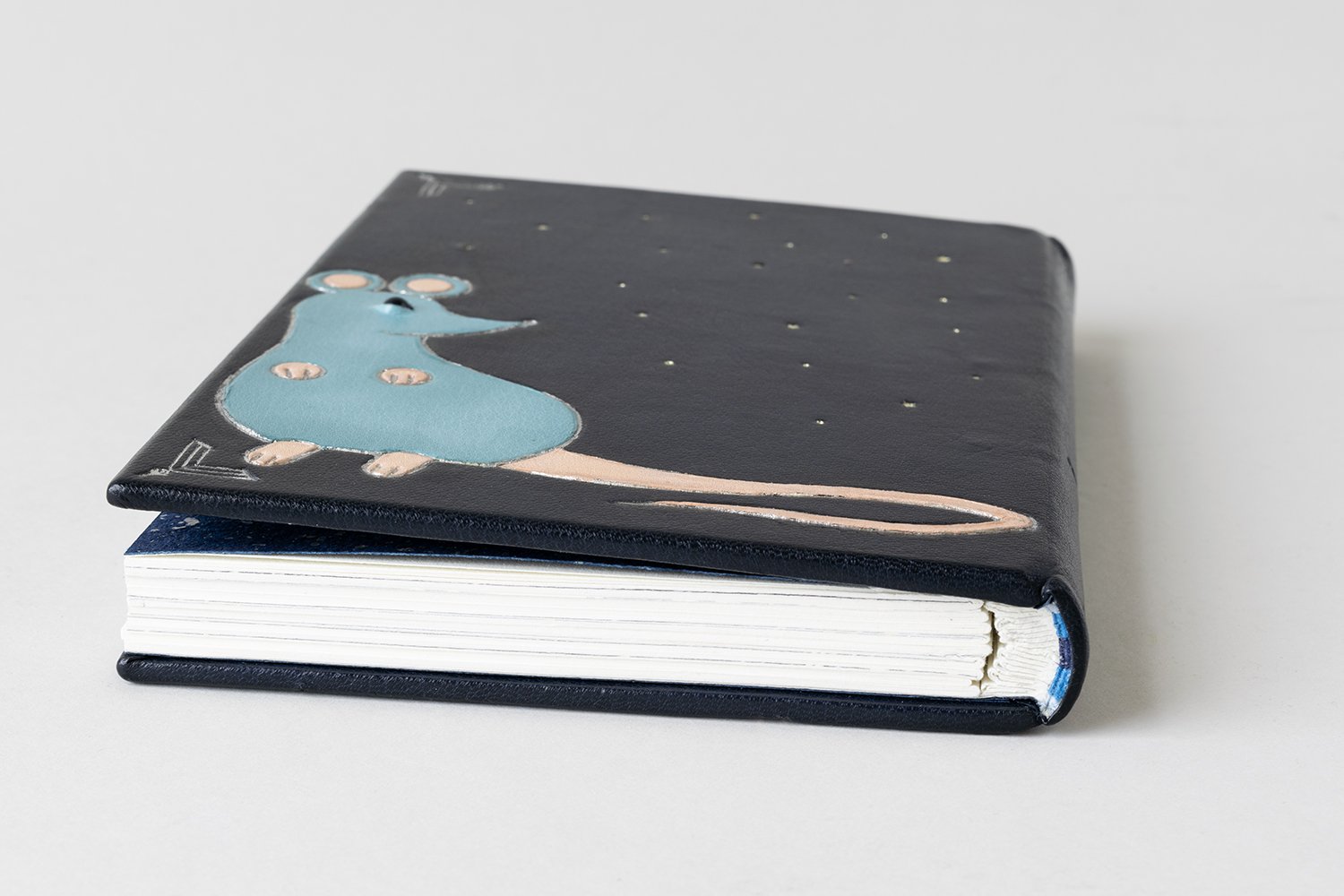



Emily Stanley BB ’24
Emily hoped to emulate folk art of the era through her design. A dead embroidered rabbit is inset into the front cover and each board is framed with a carbon-tooled design. The binding is covered in a brown goatskin with additional elements such as the title, author, and phrase from the book carbon-tooled.



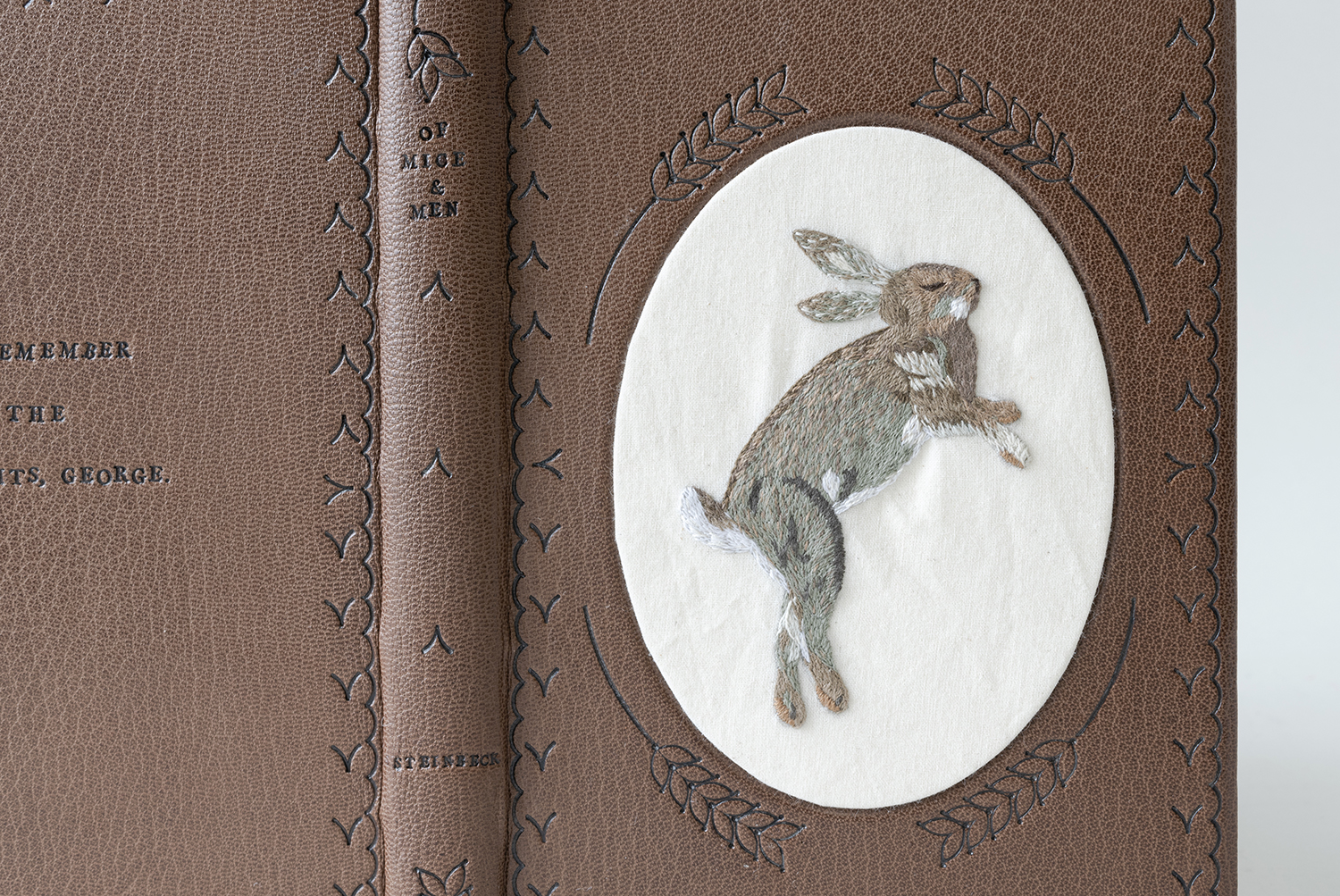

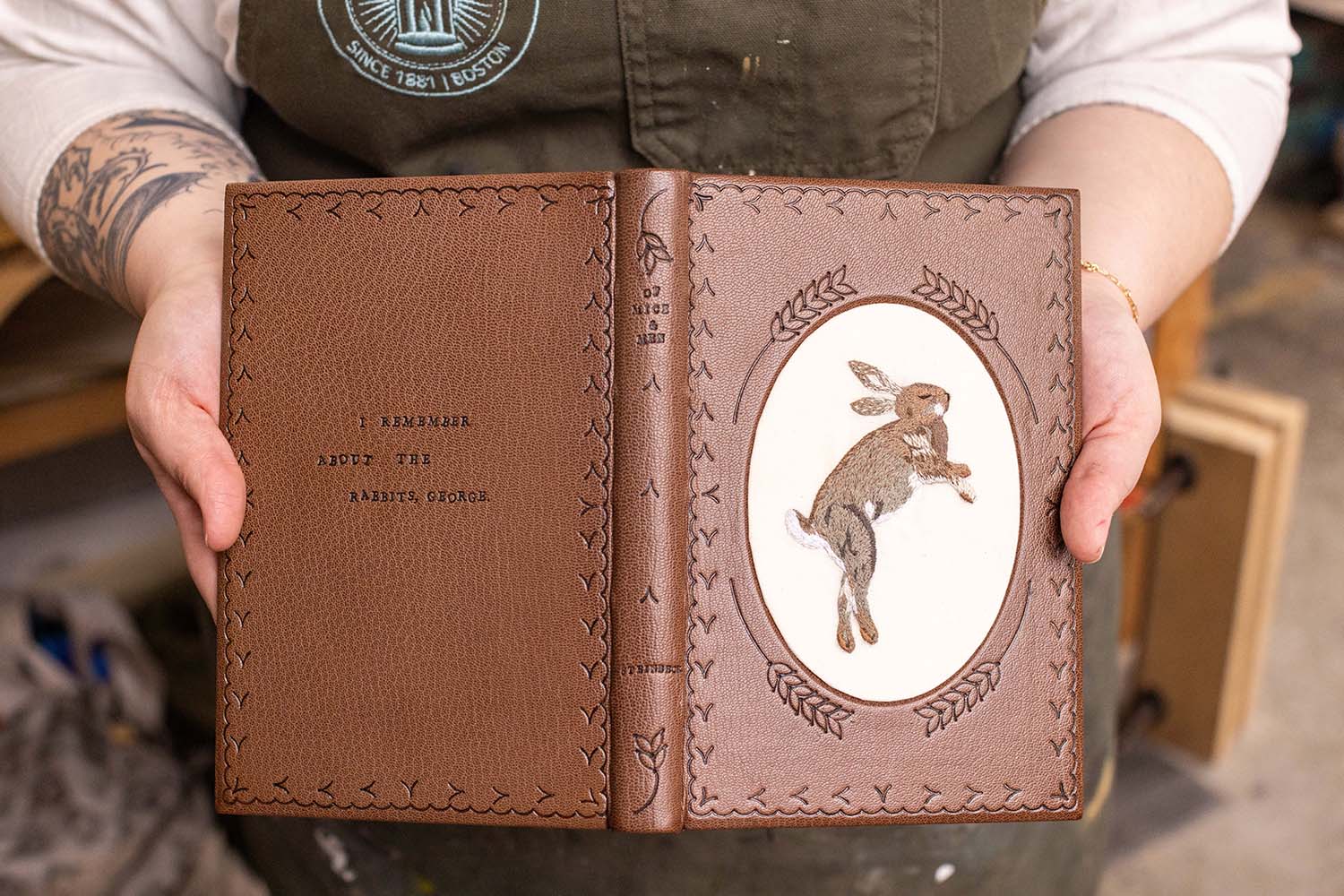
This article was written by Bookbinding alumna Erin Fletcher BB ’12. Each year, Erin interviews the graduating Bookbinding class about their set books and future plans. Read her interviews with the class of 2024 here.
This story is from our Summer 2024 issue of Benchmarks magazine. View more stories from the magazine, and past issues.

